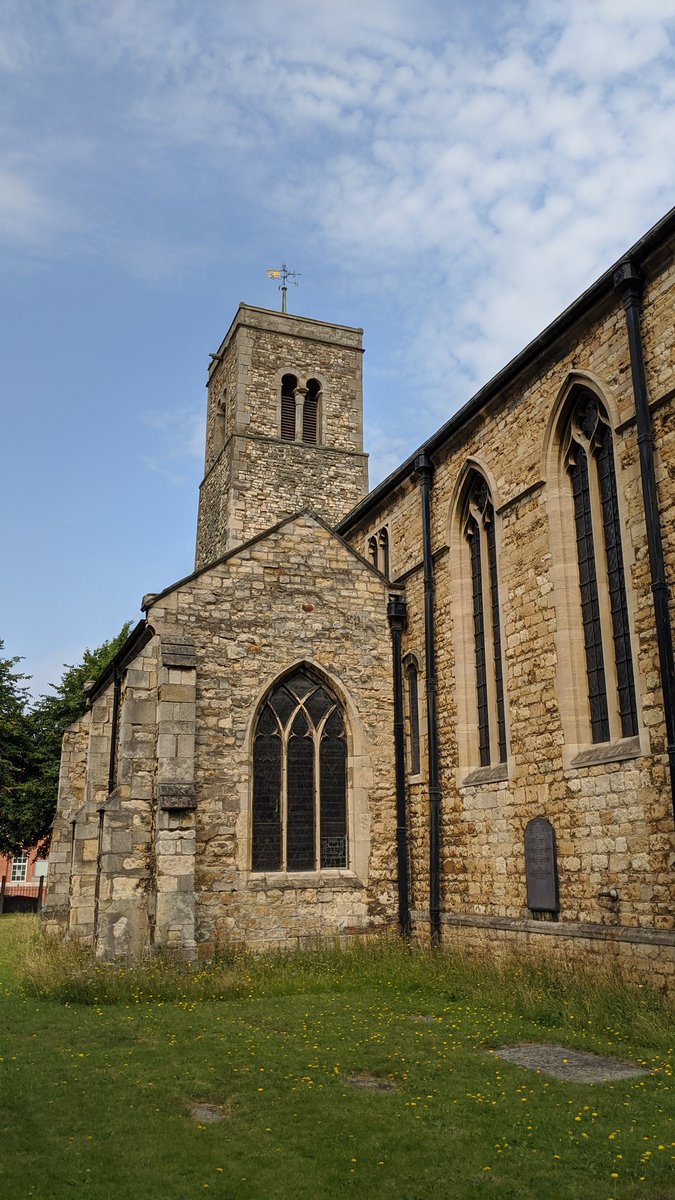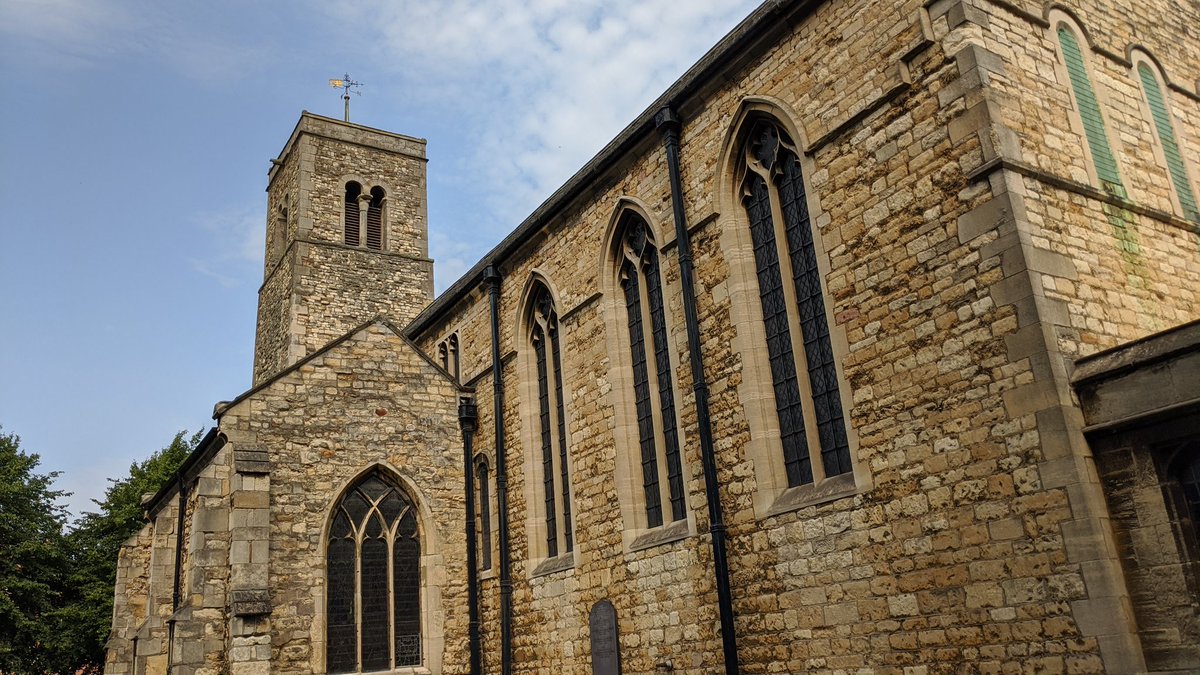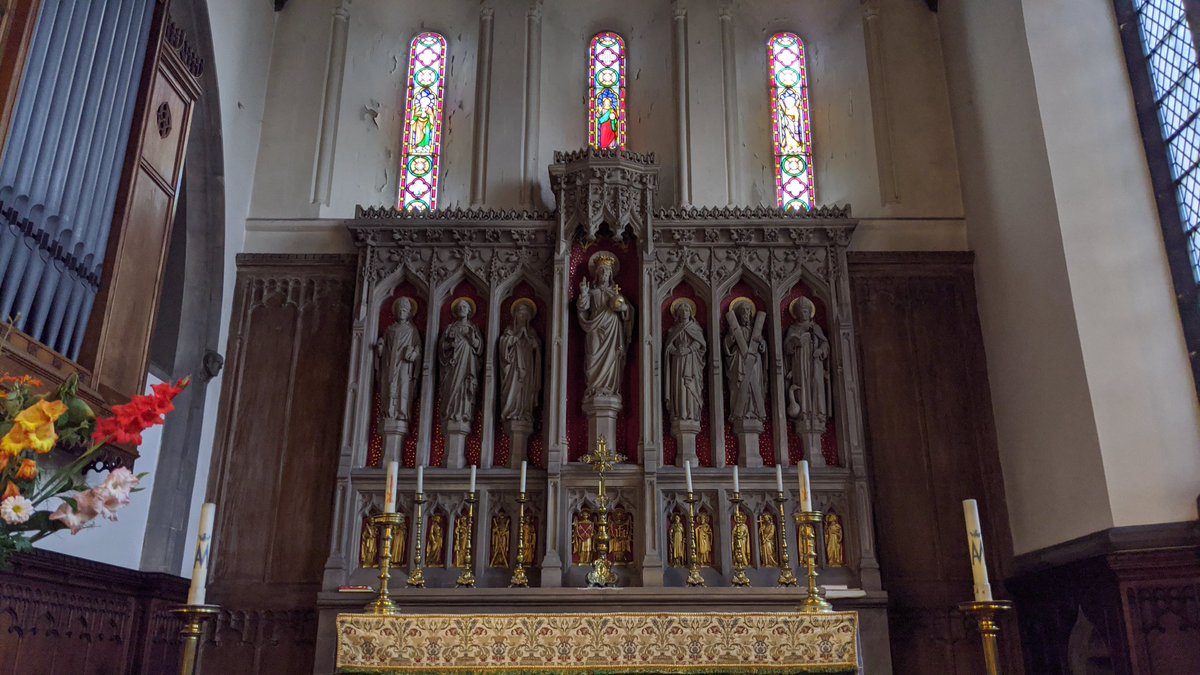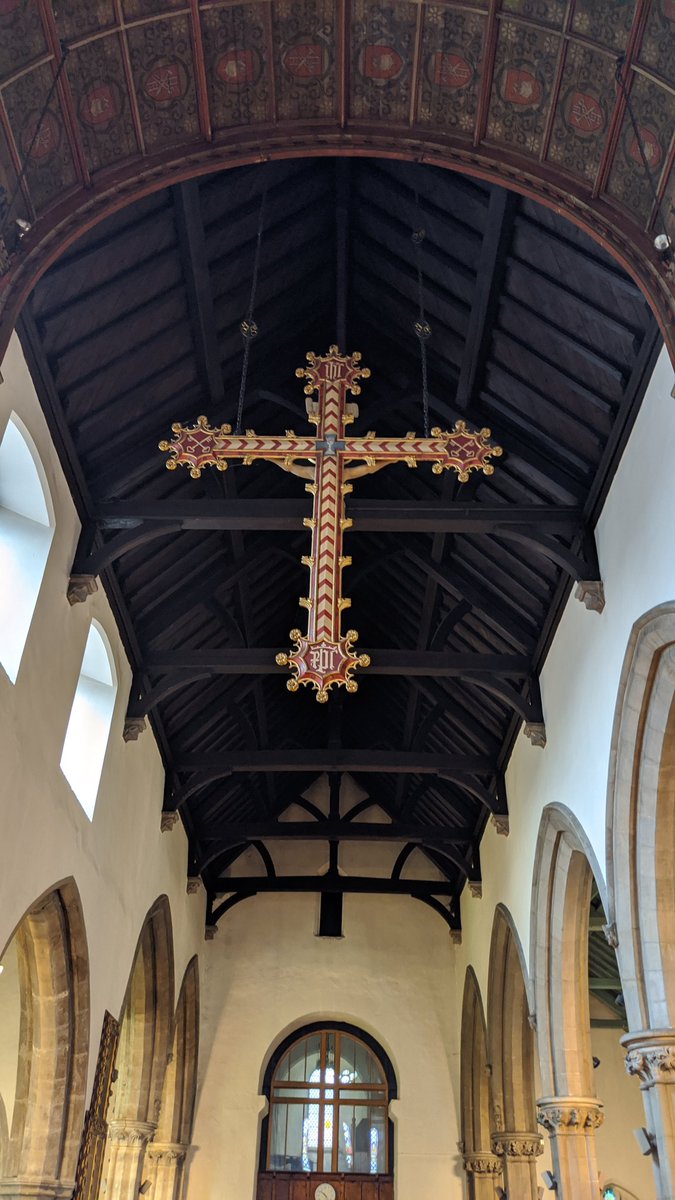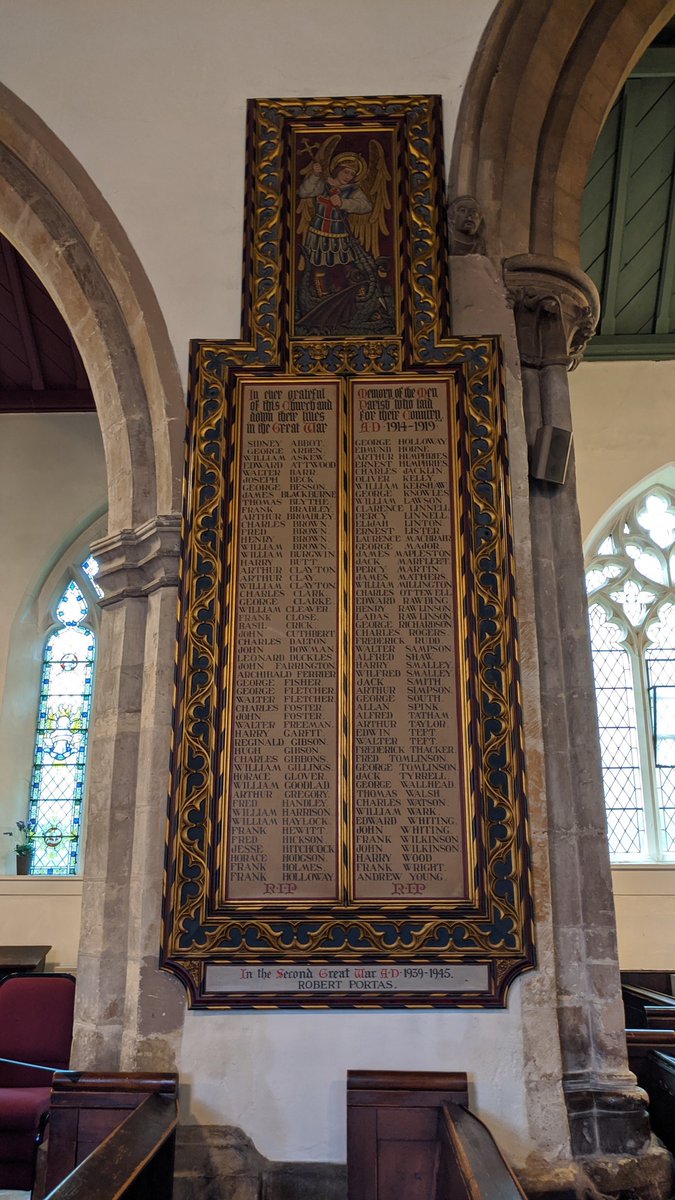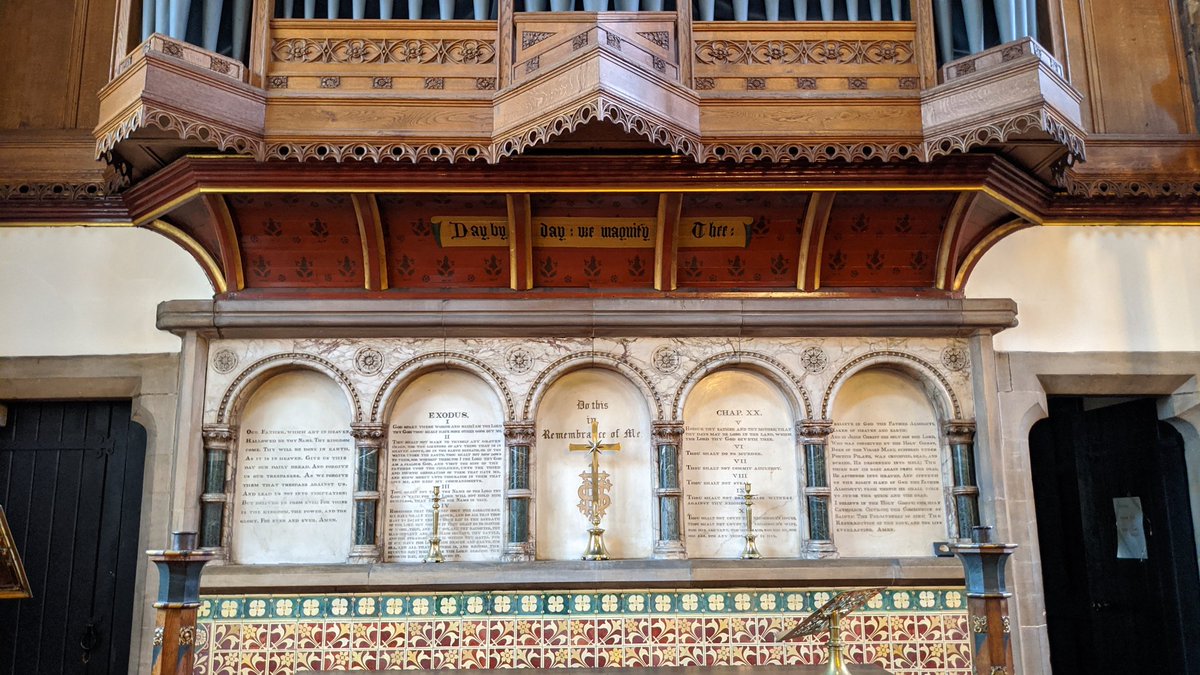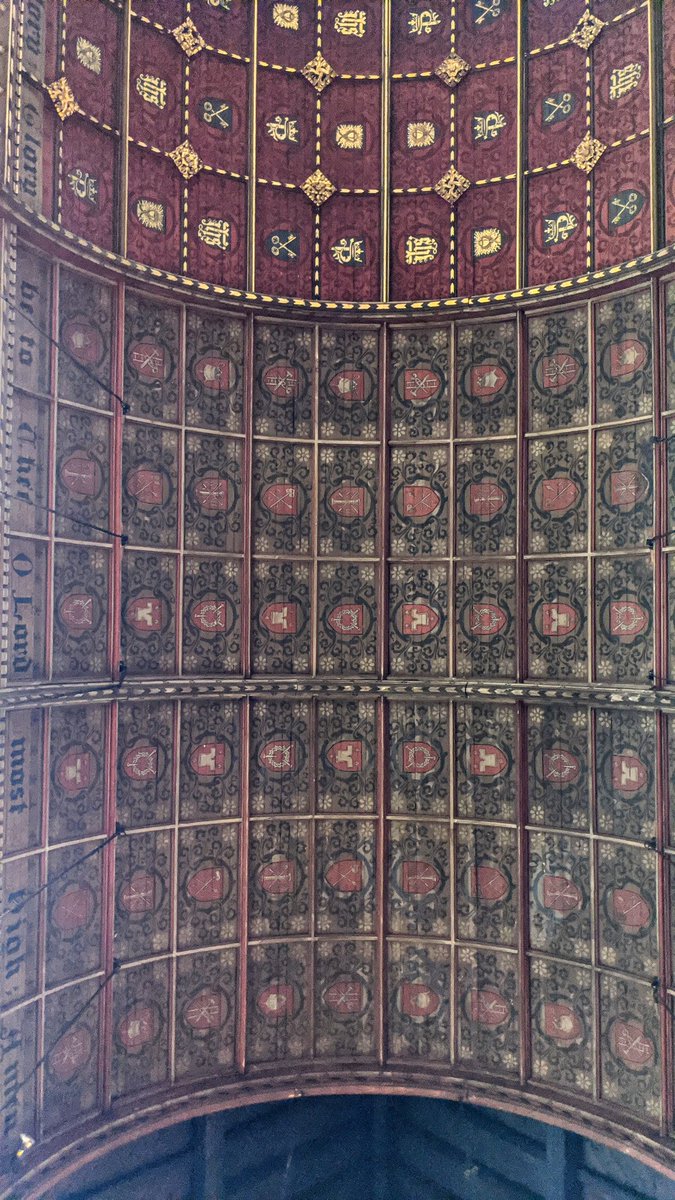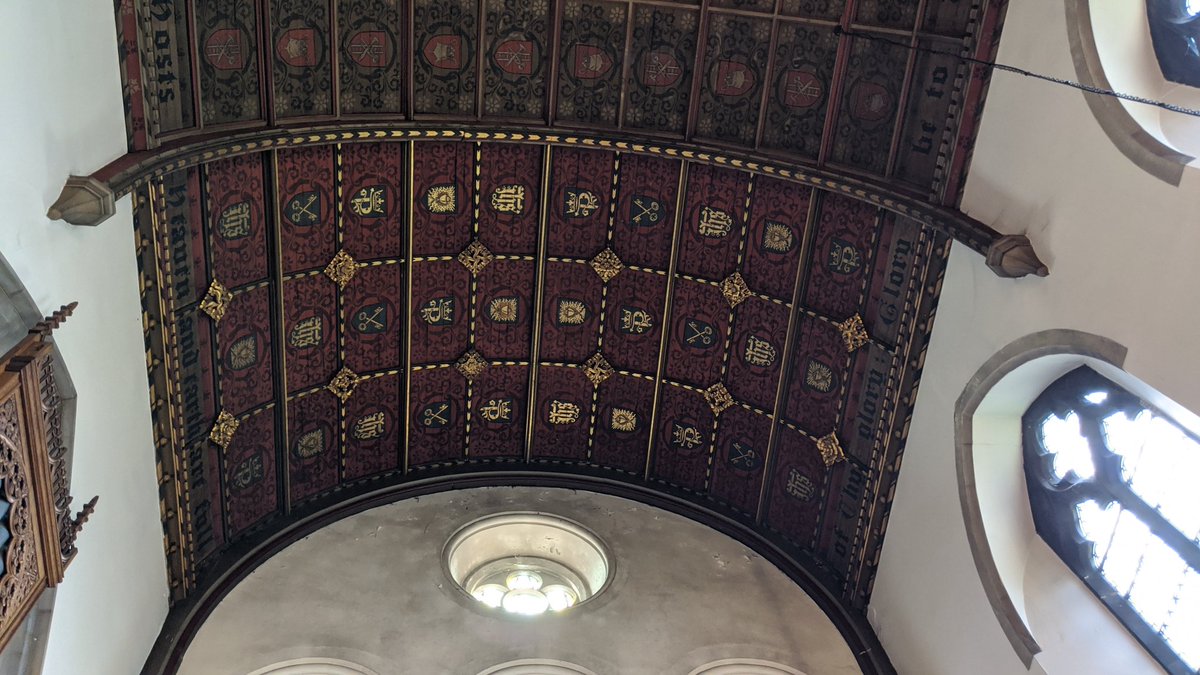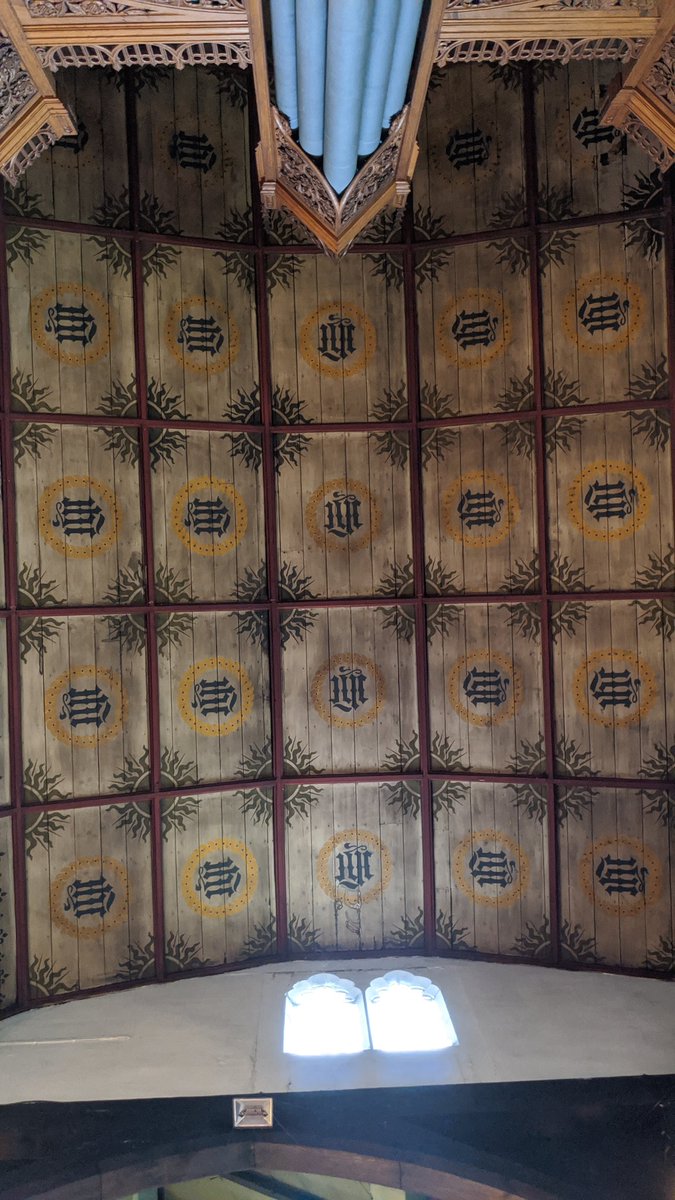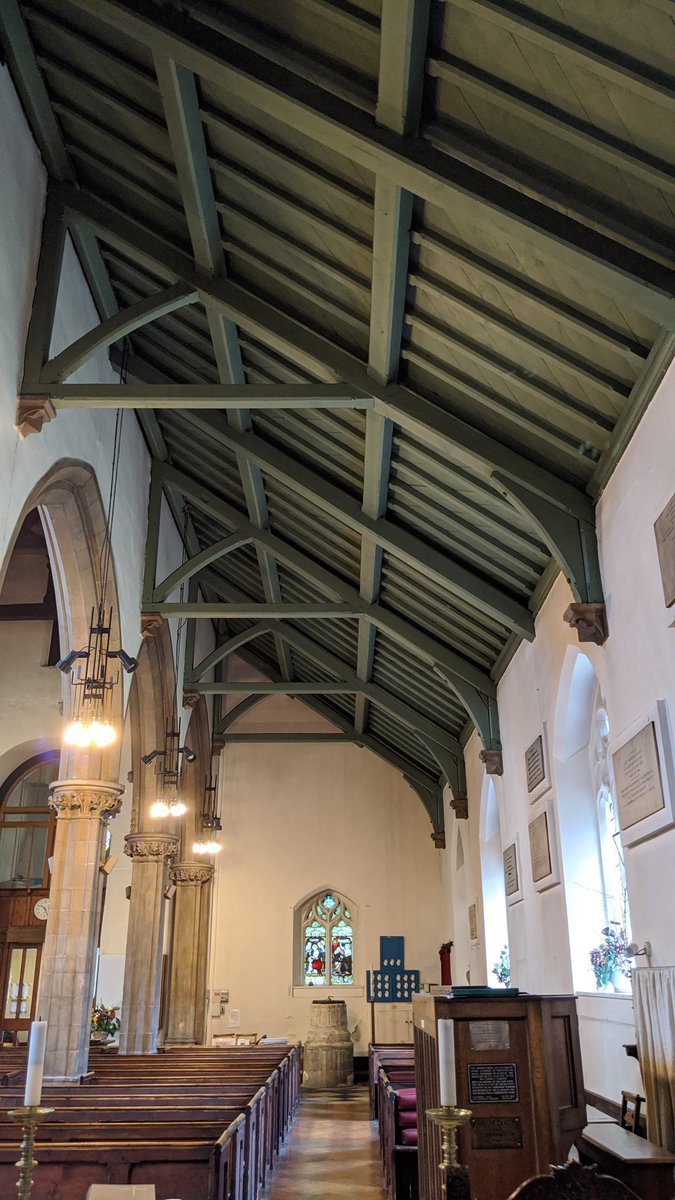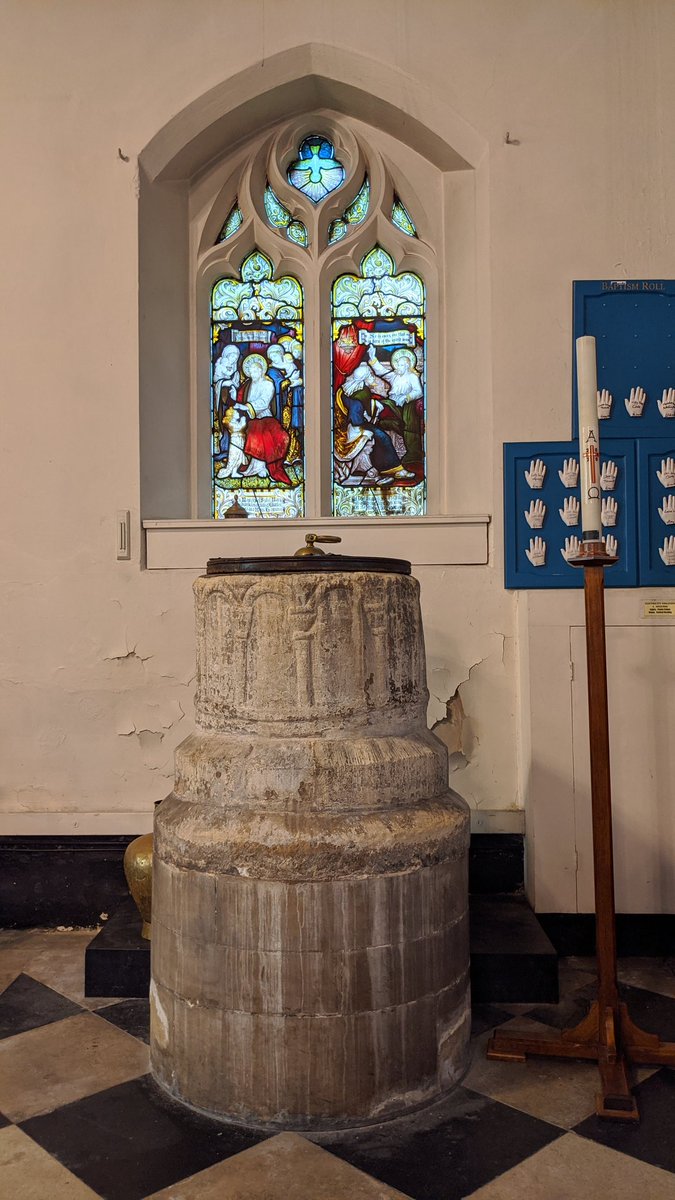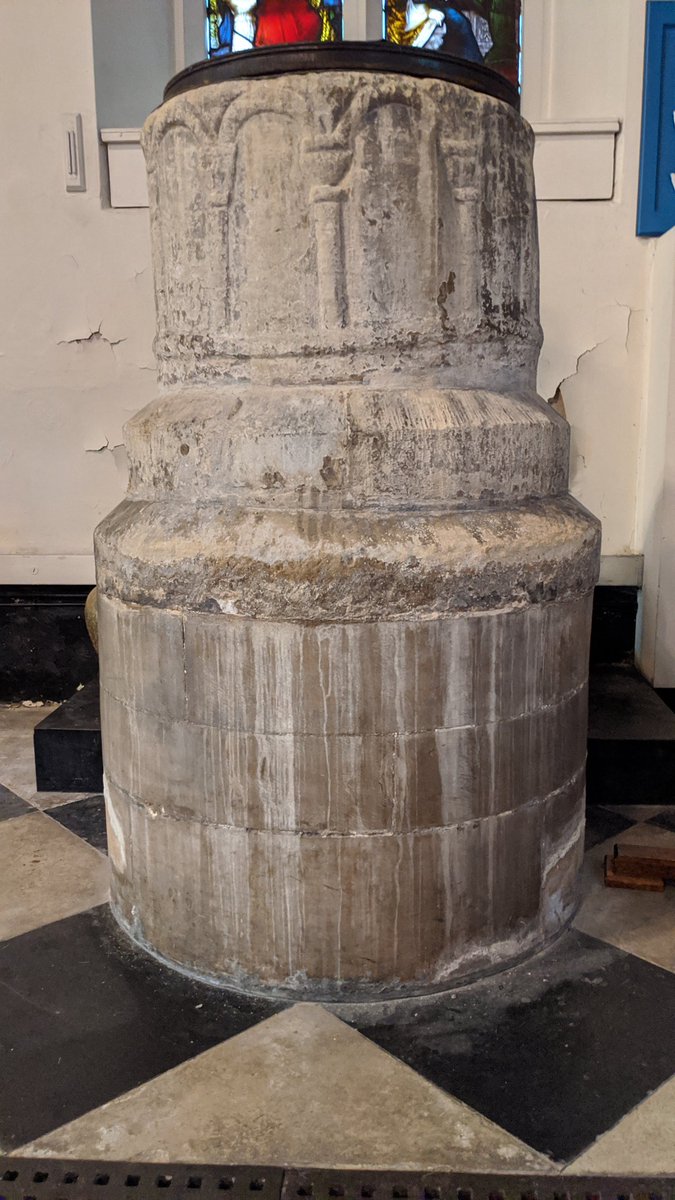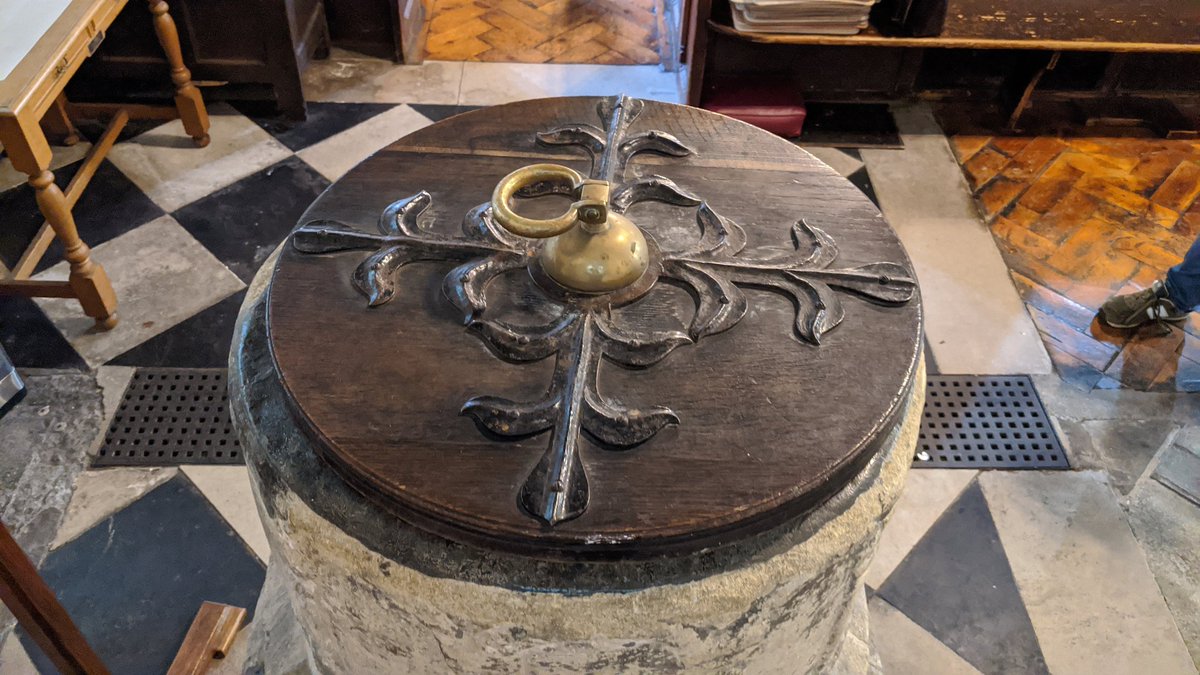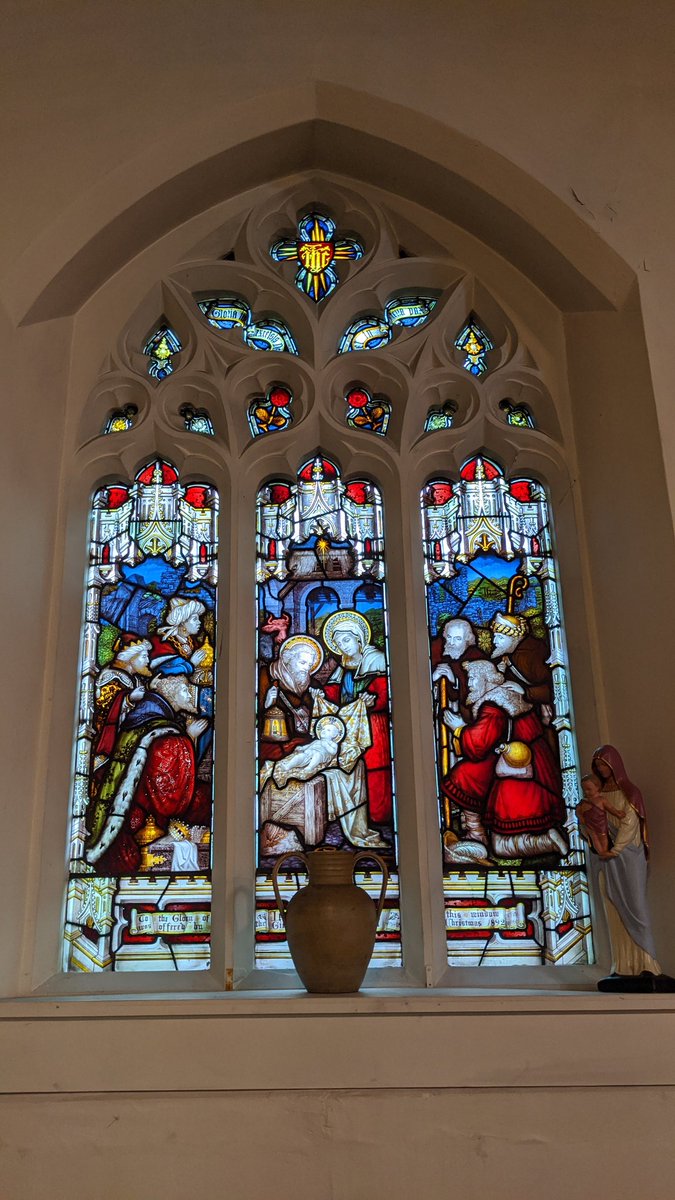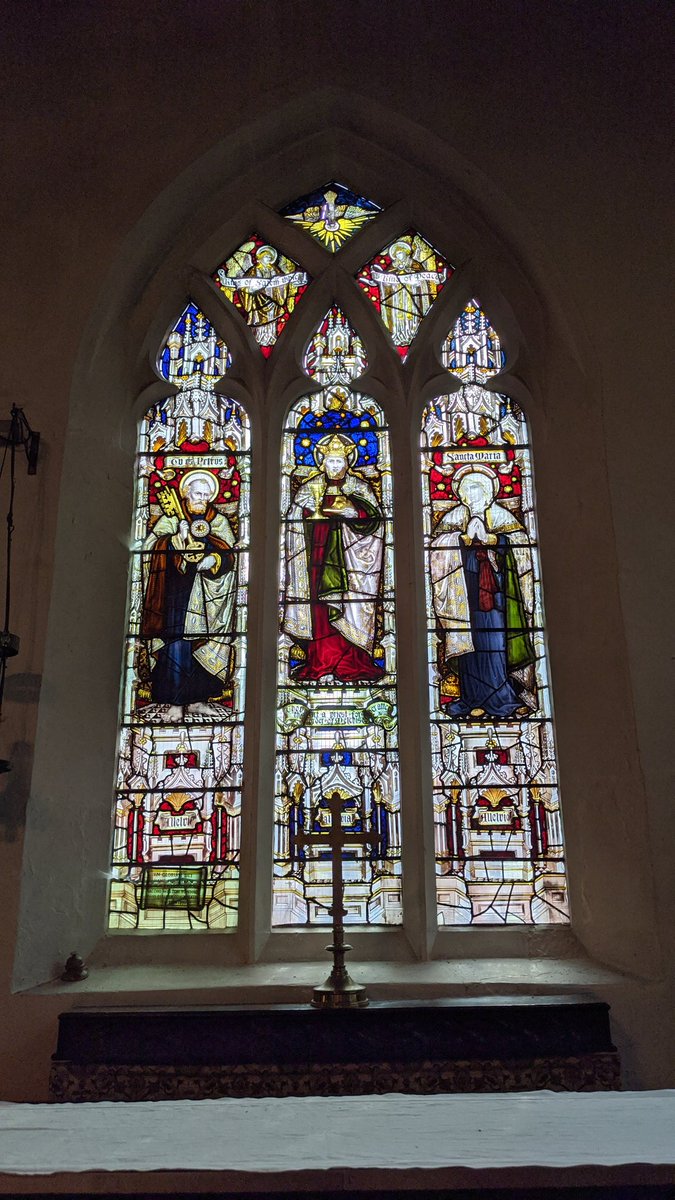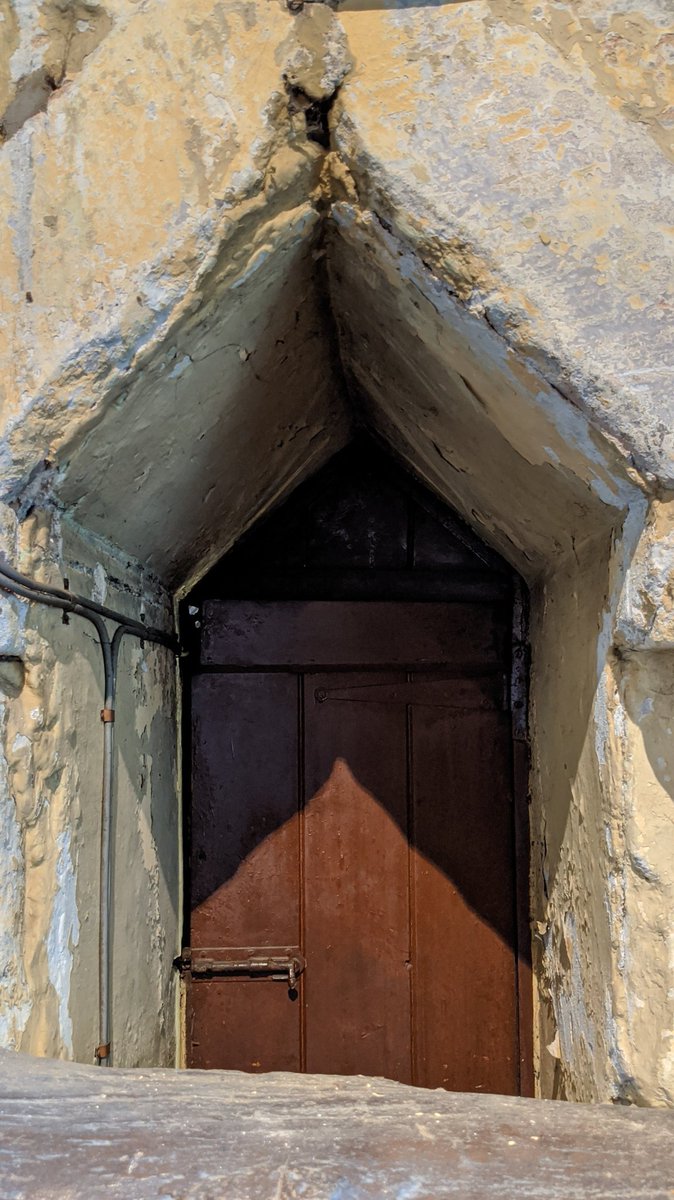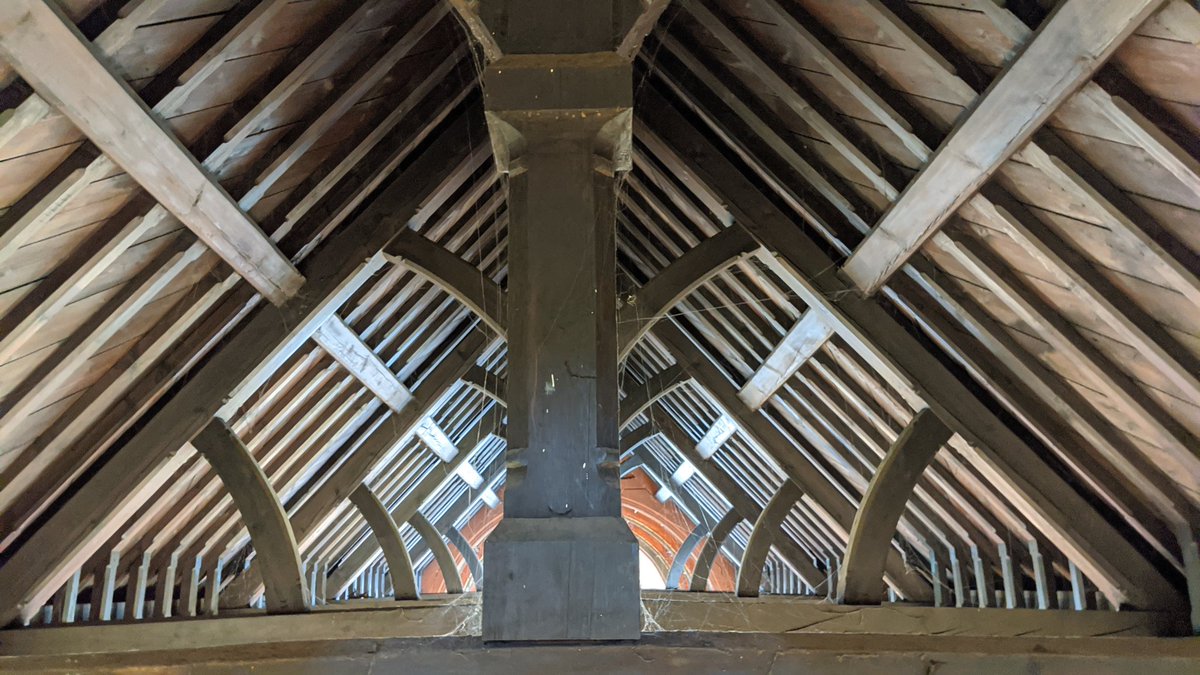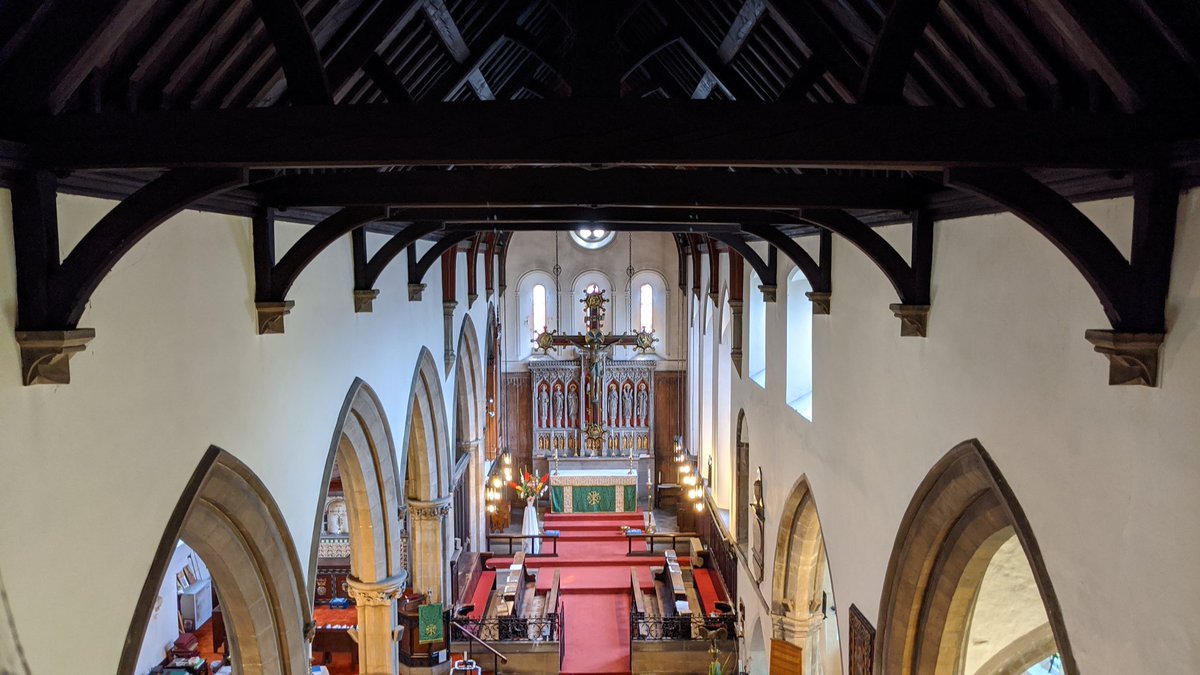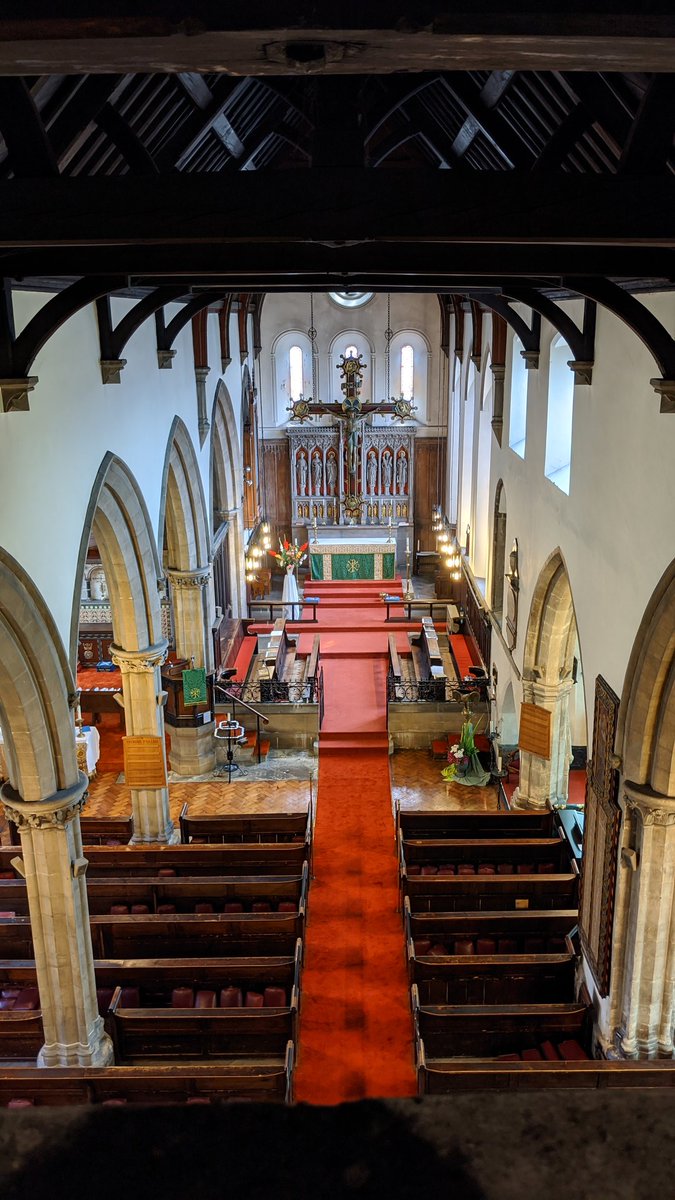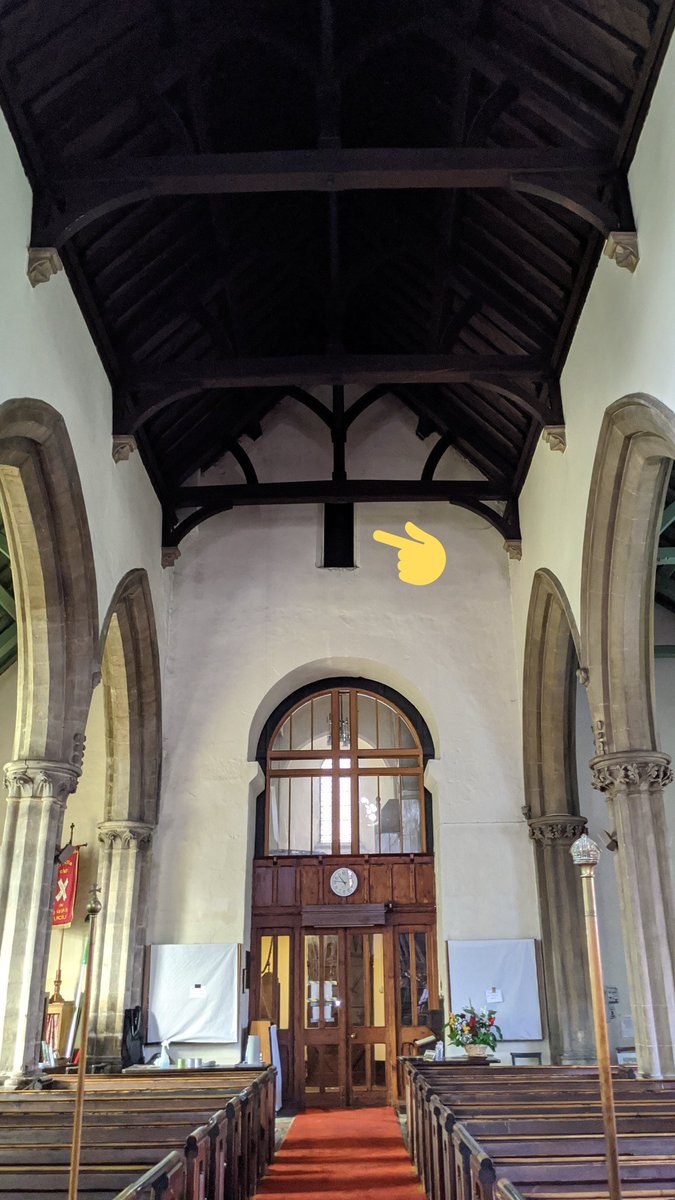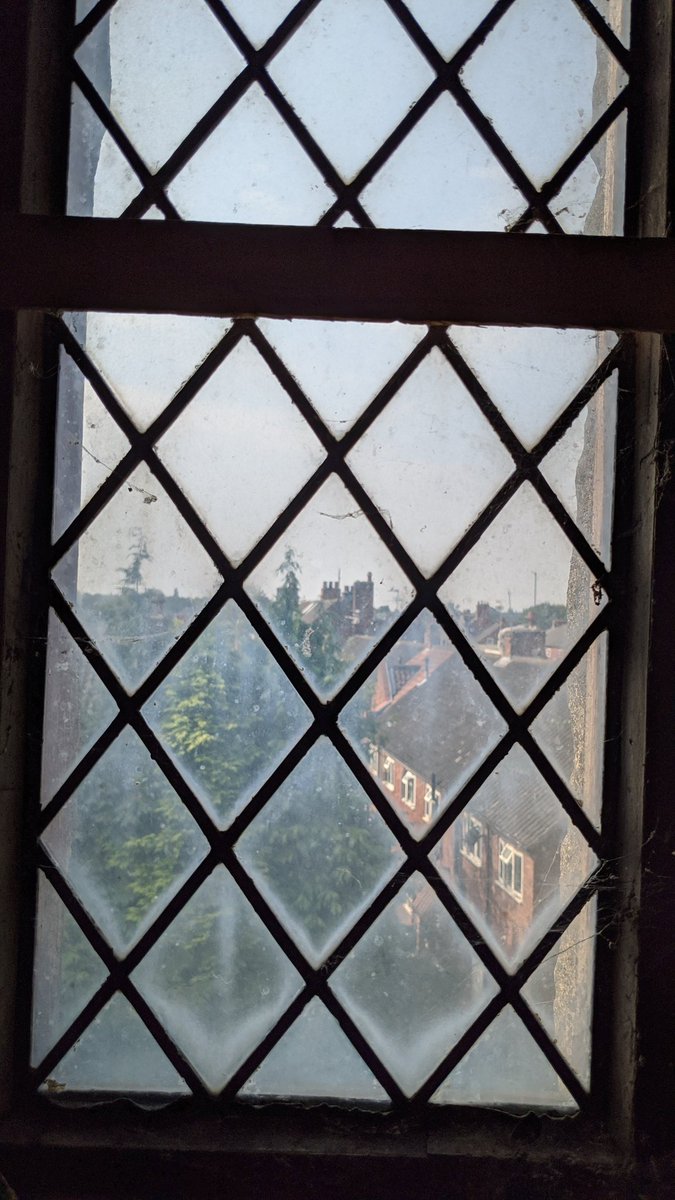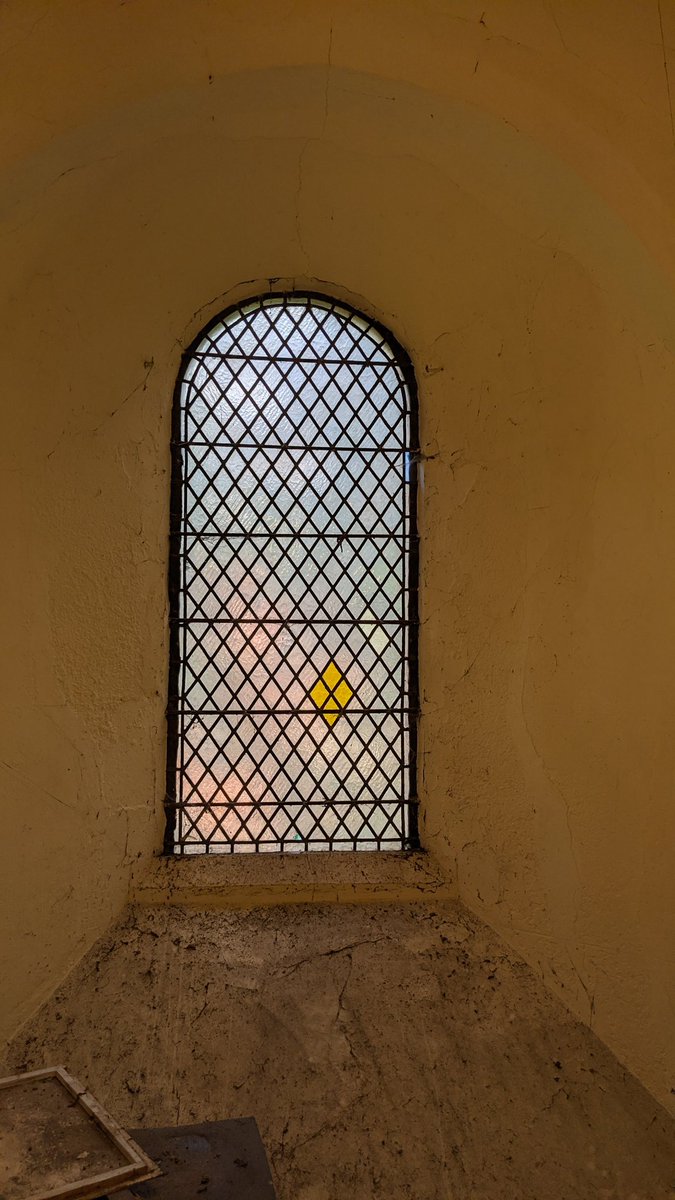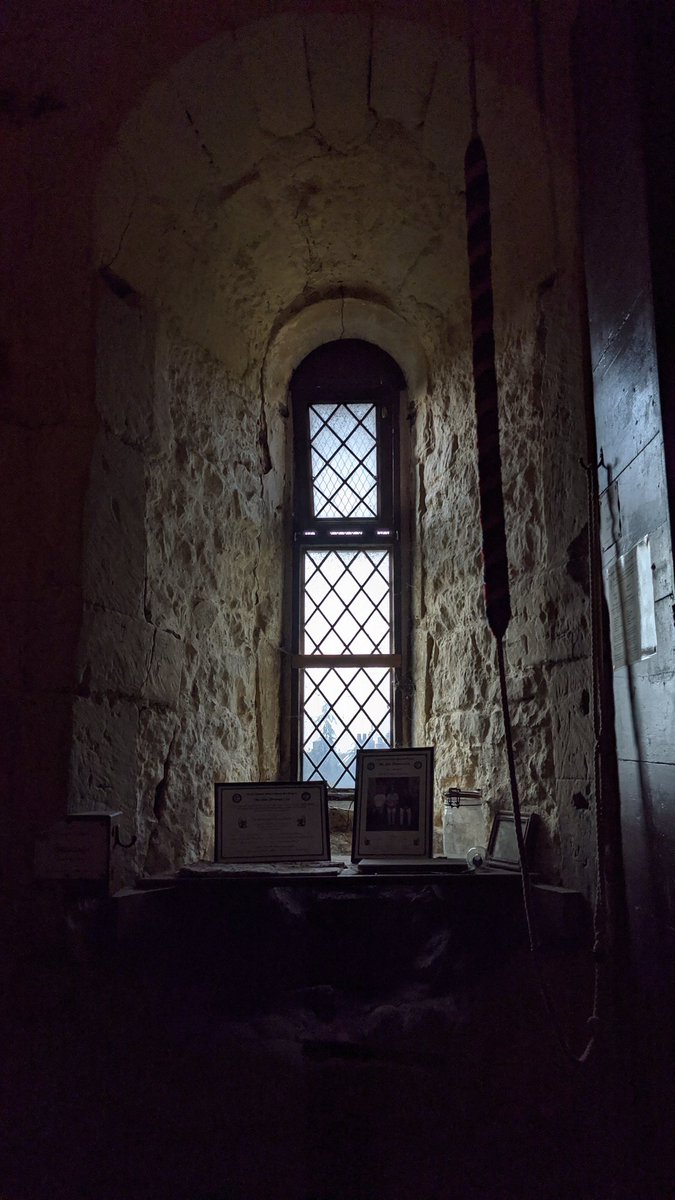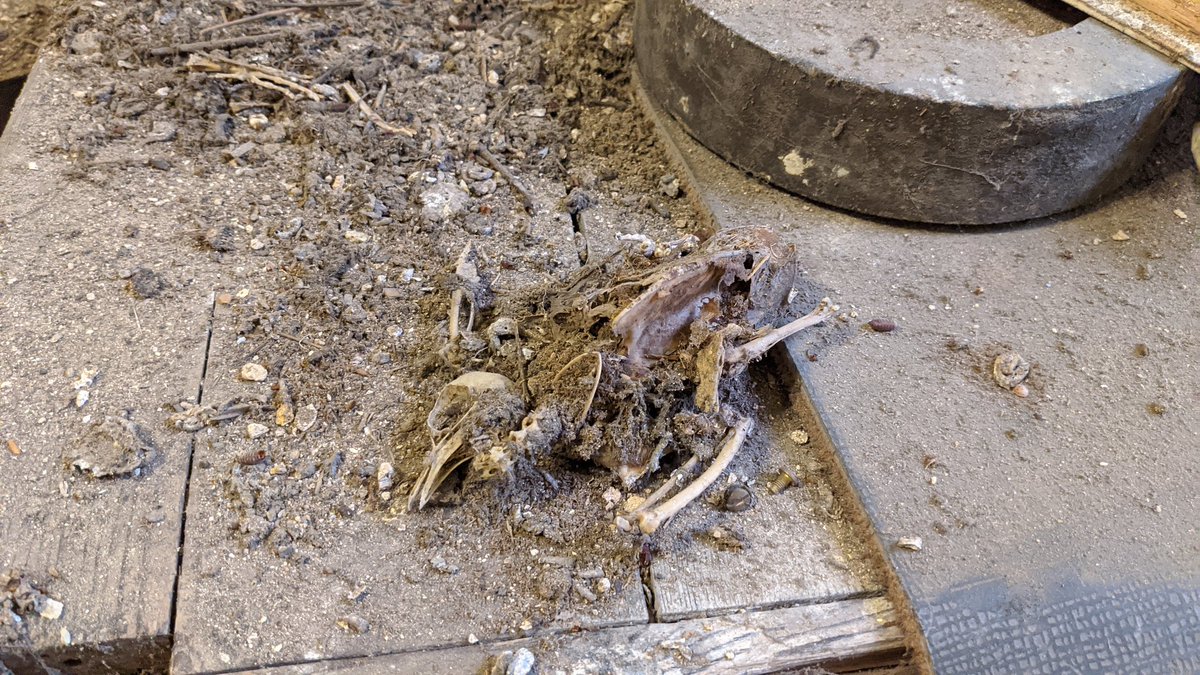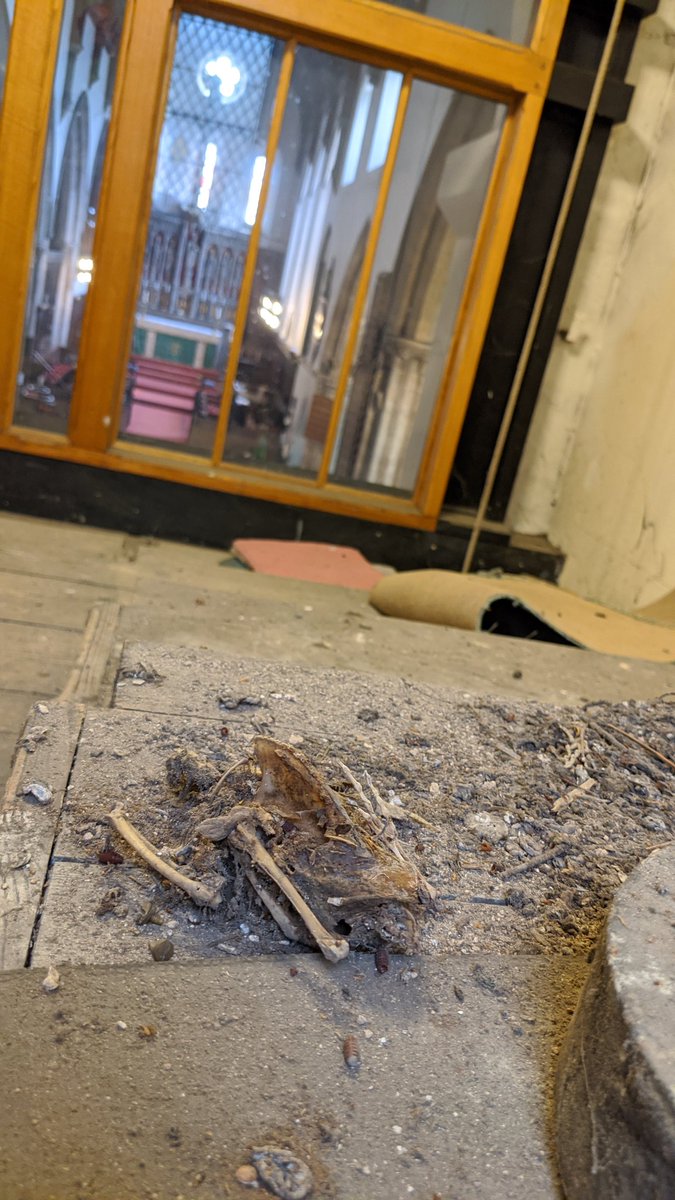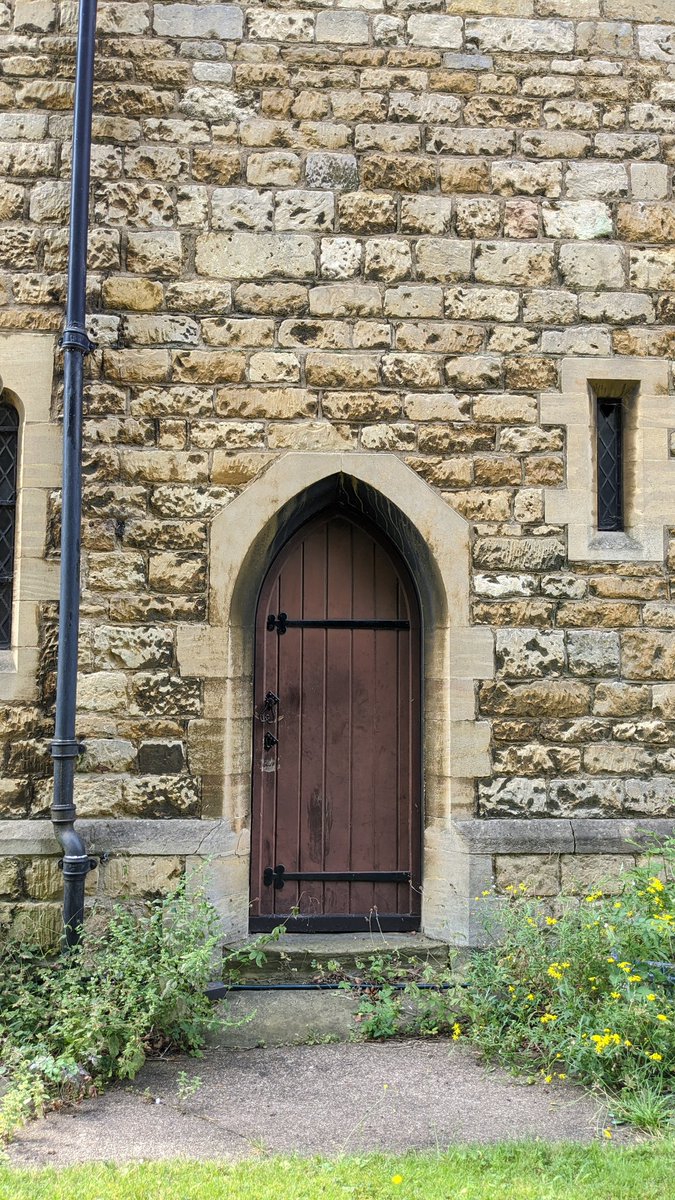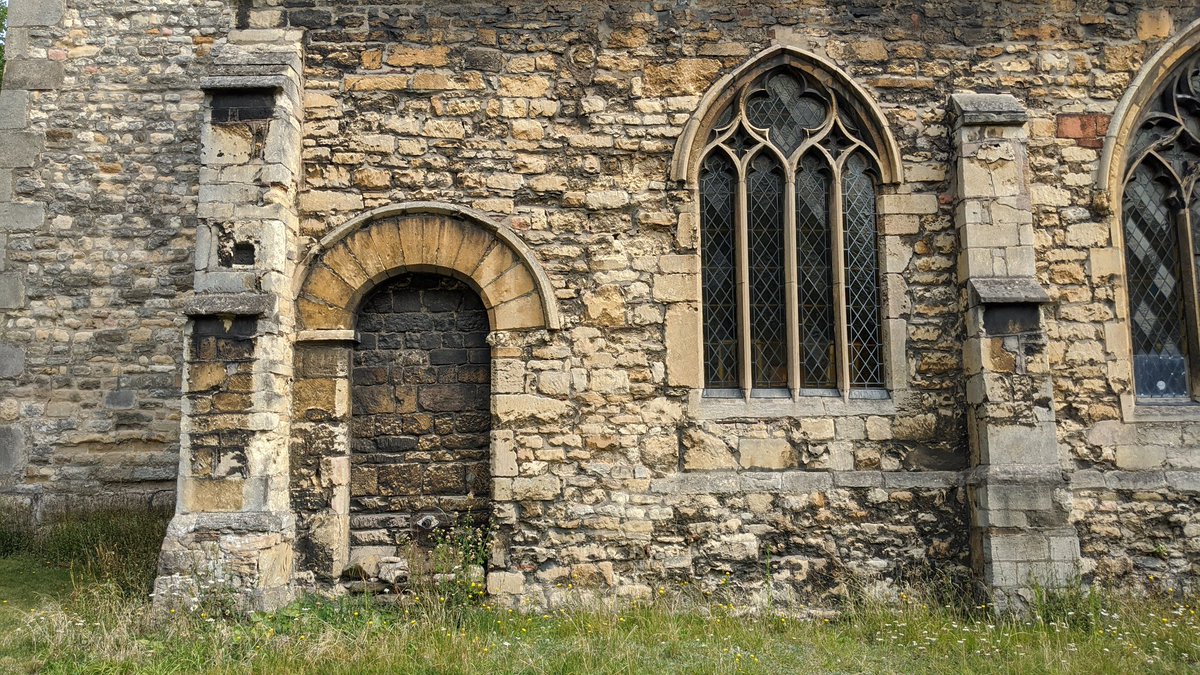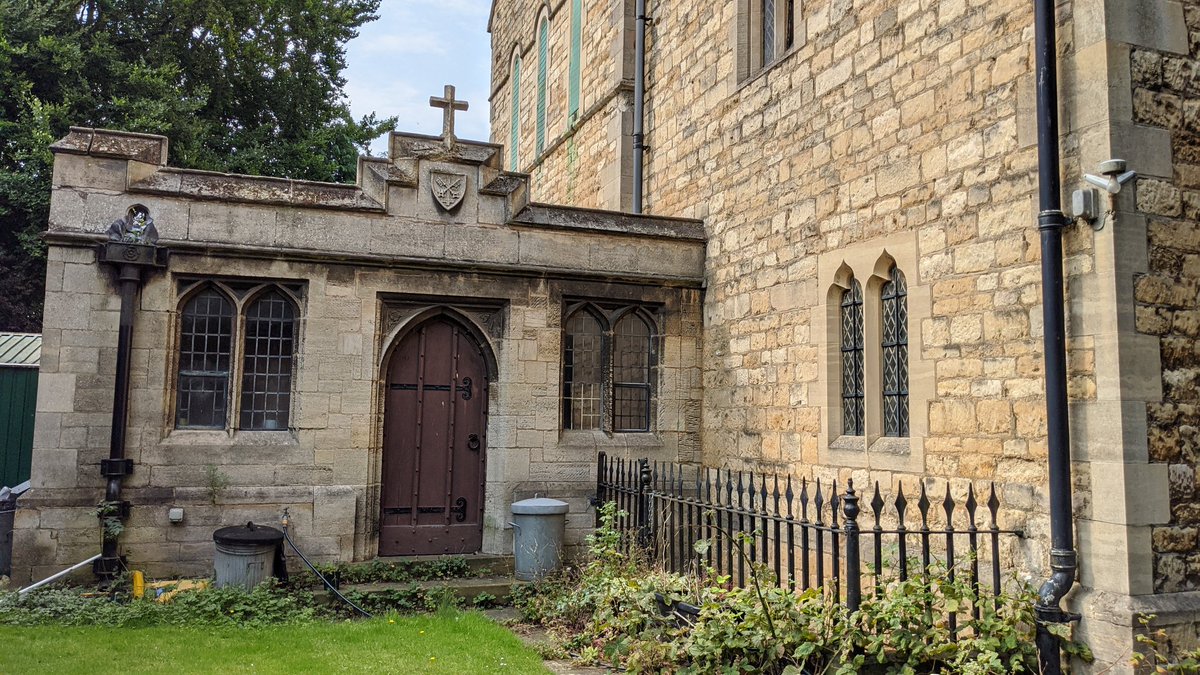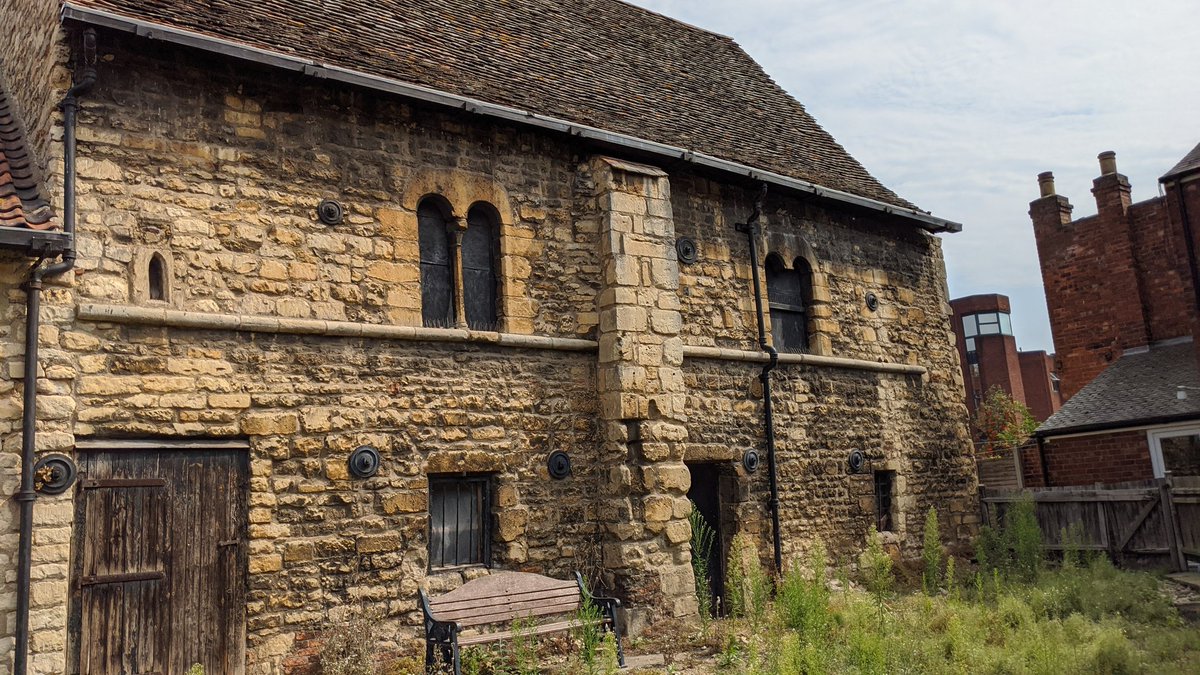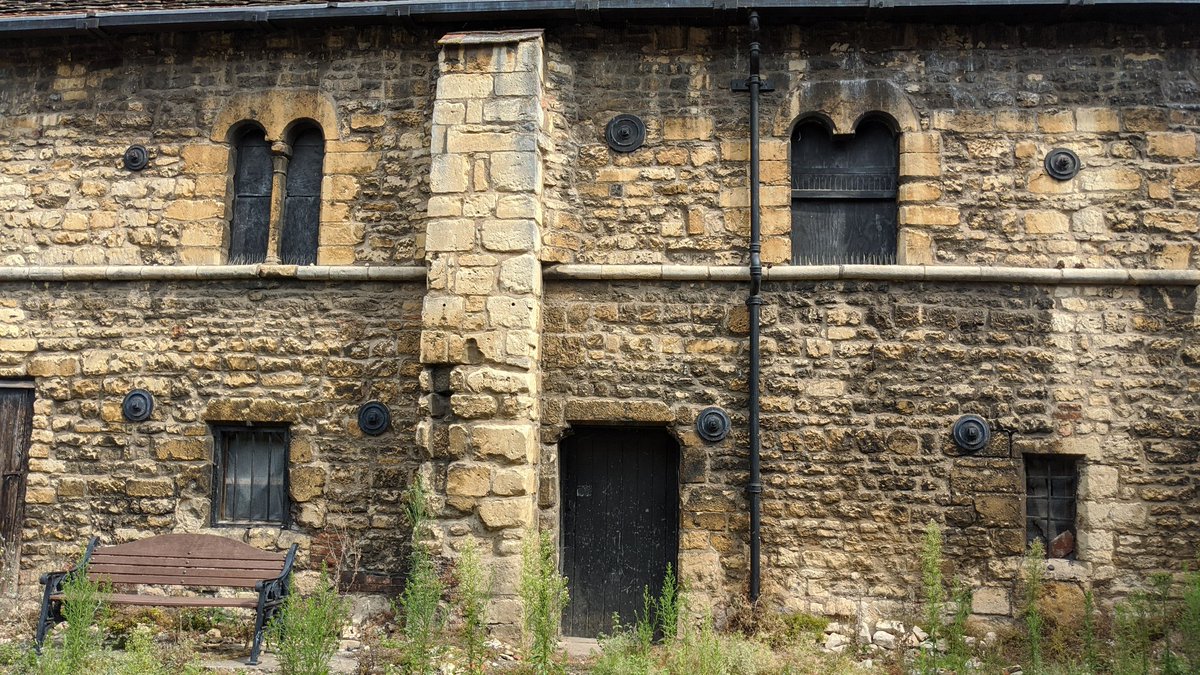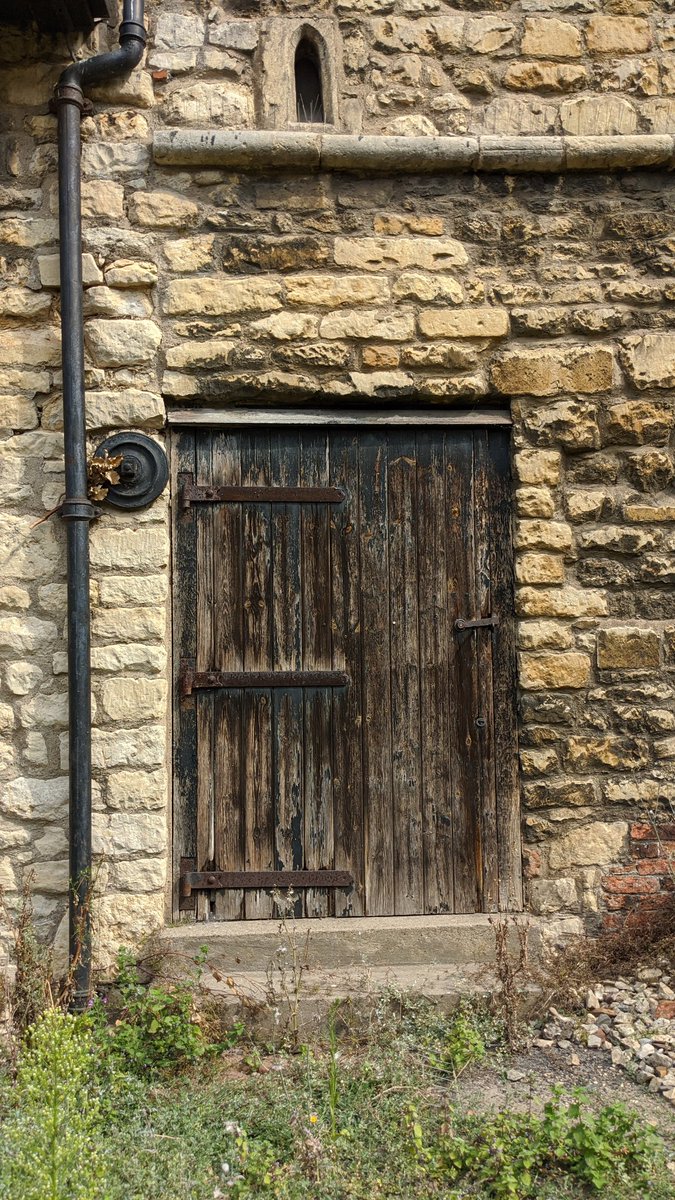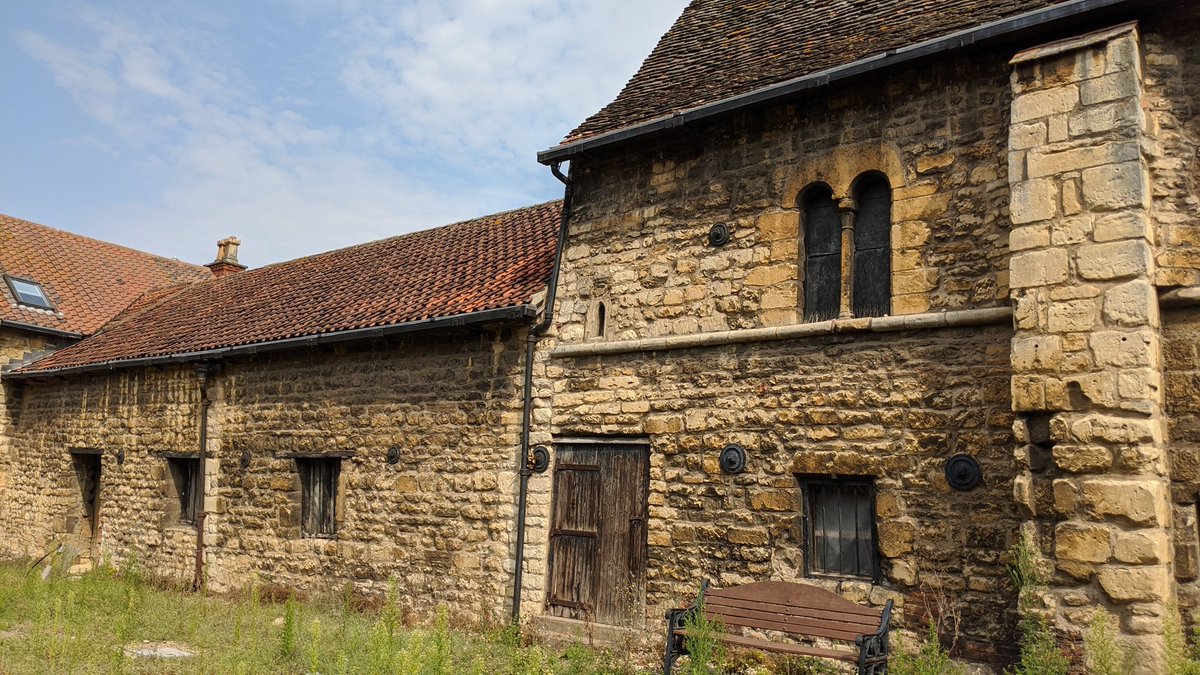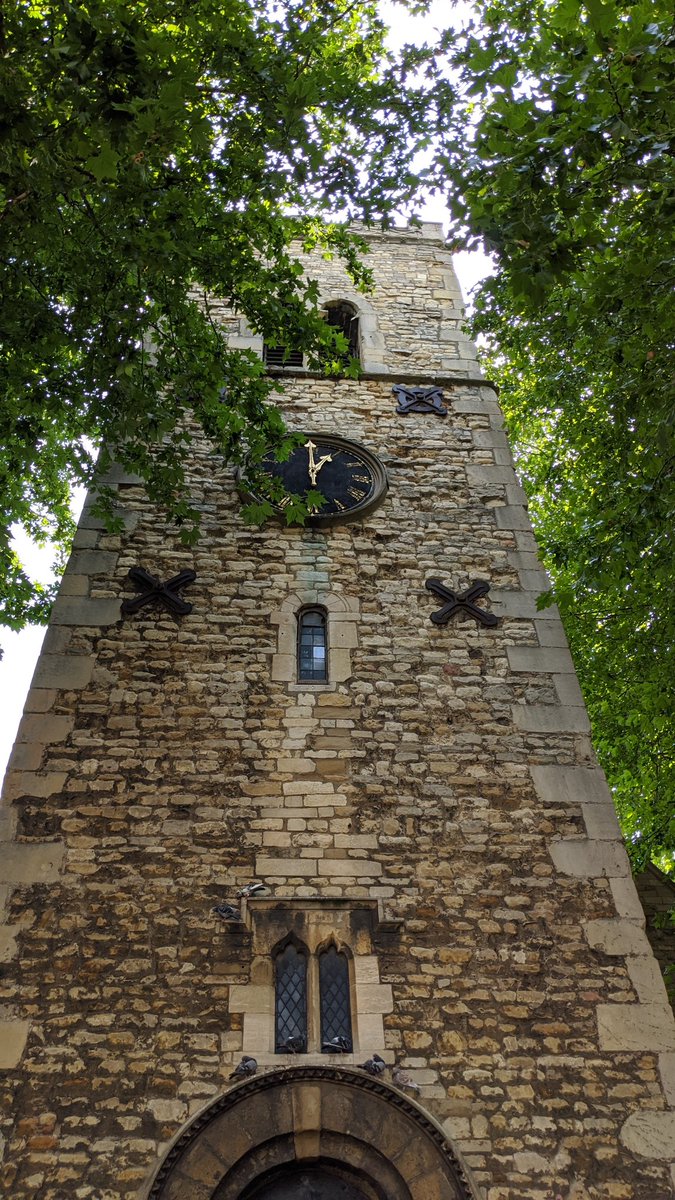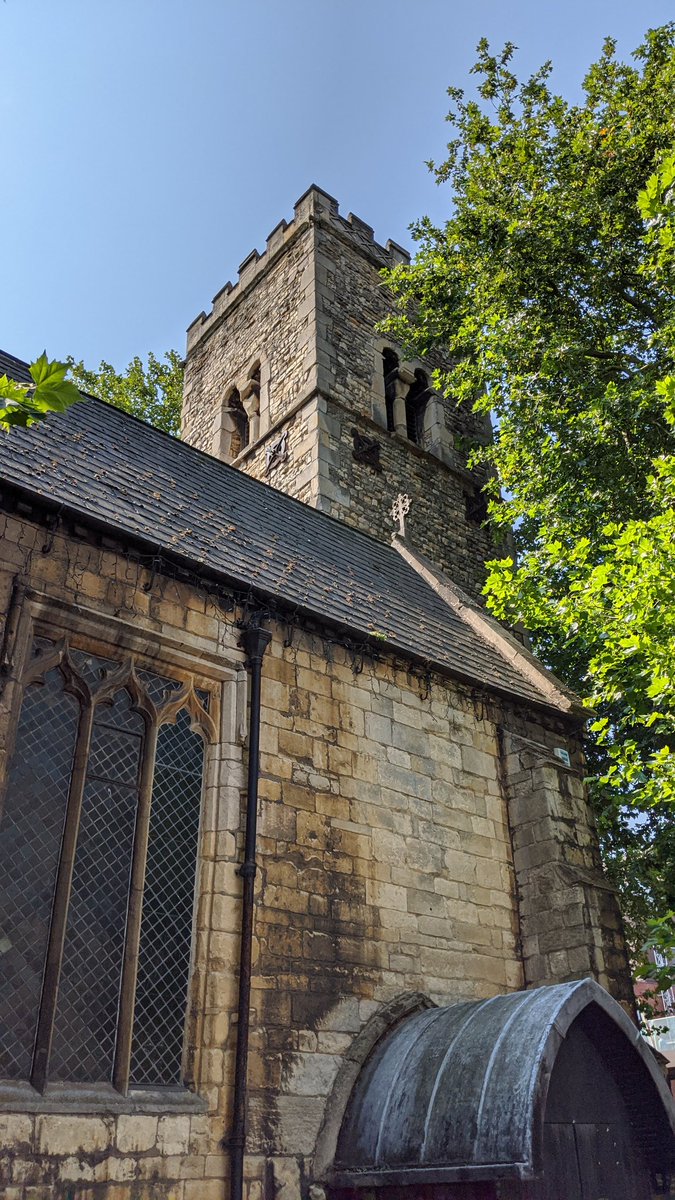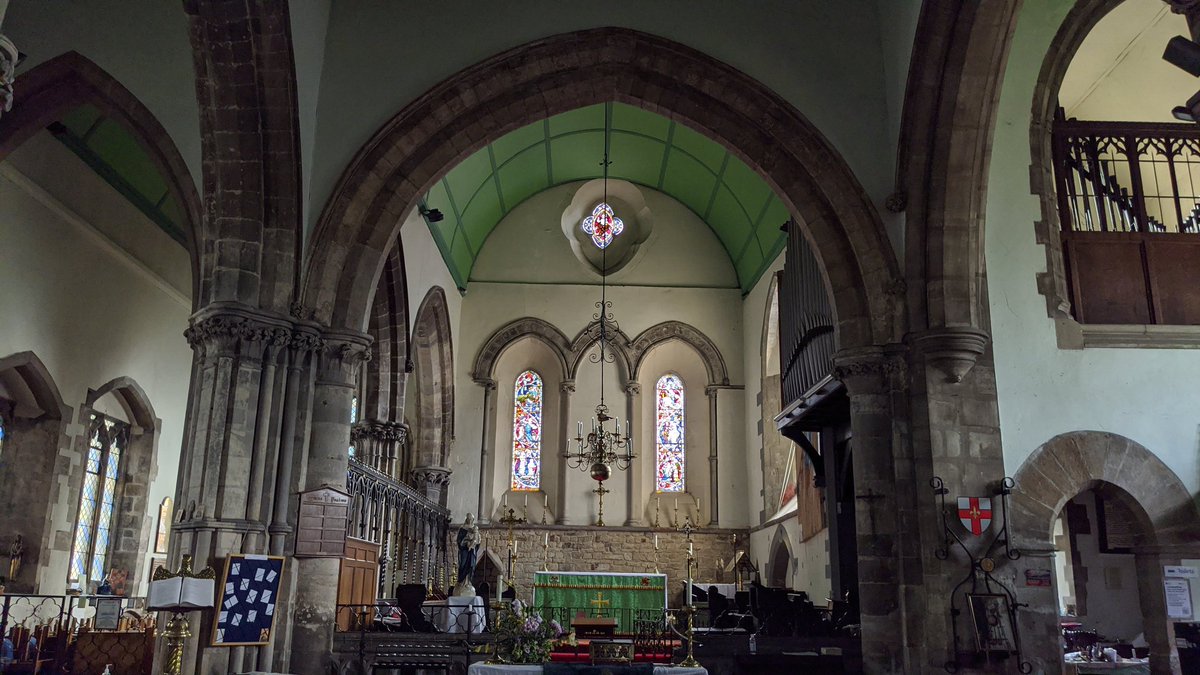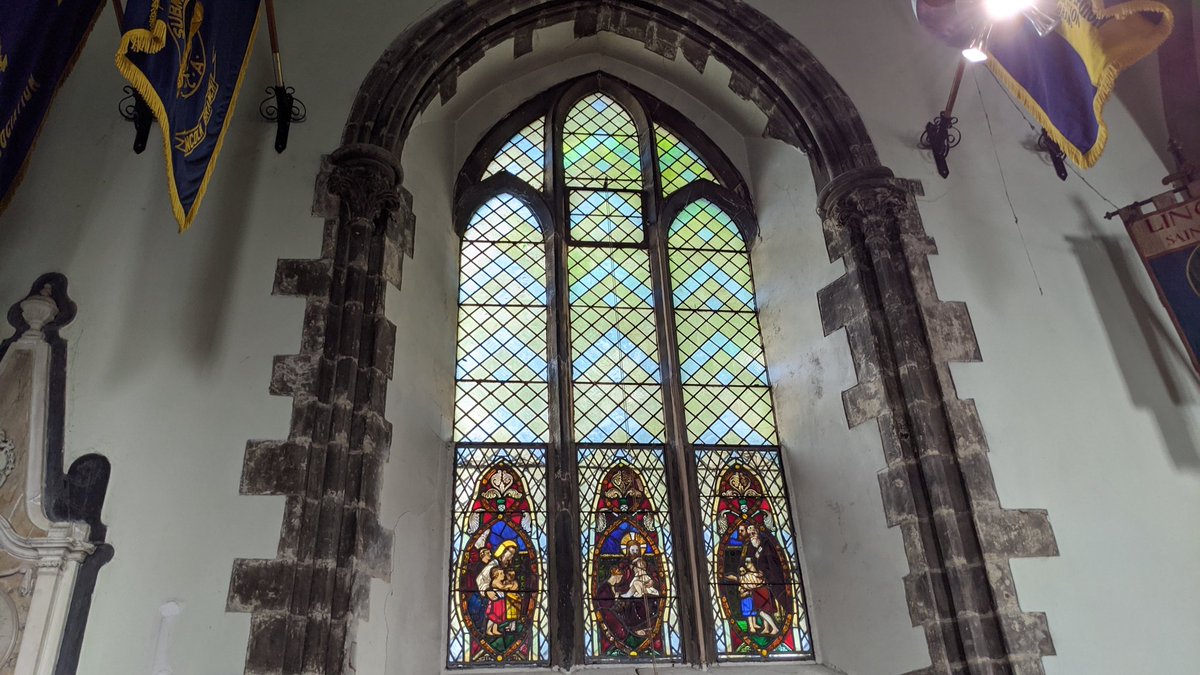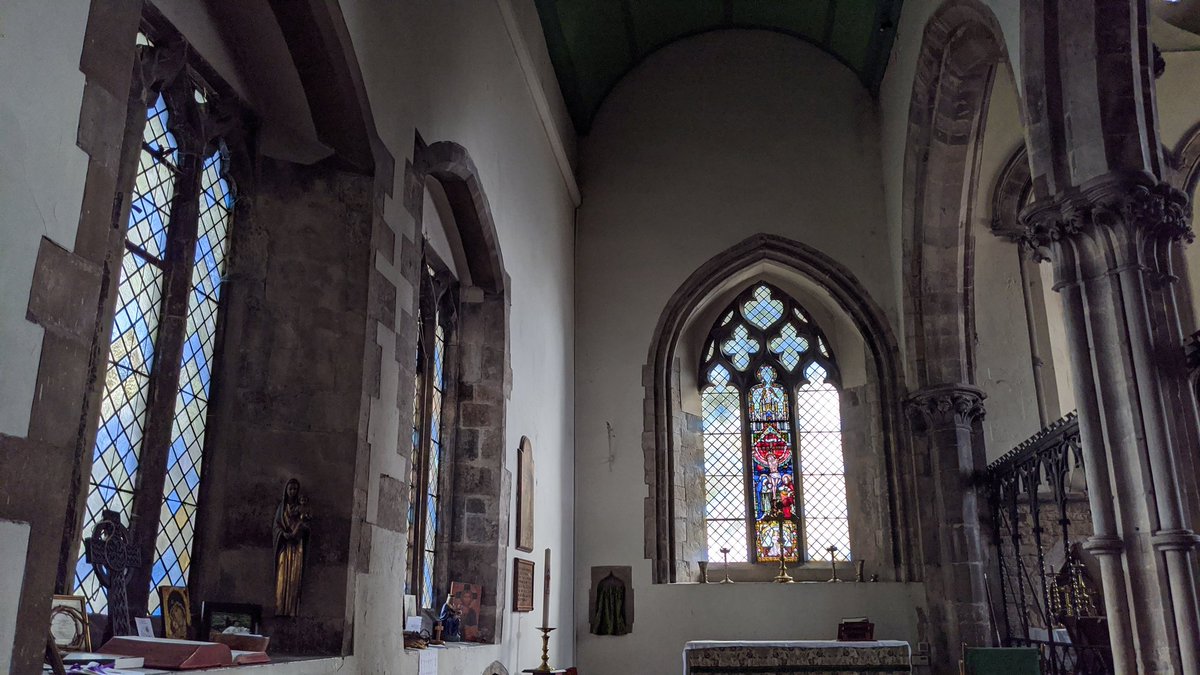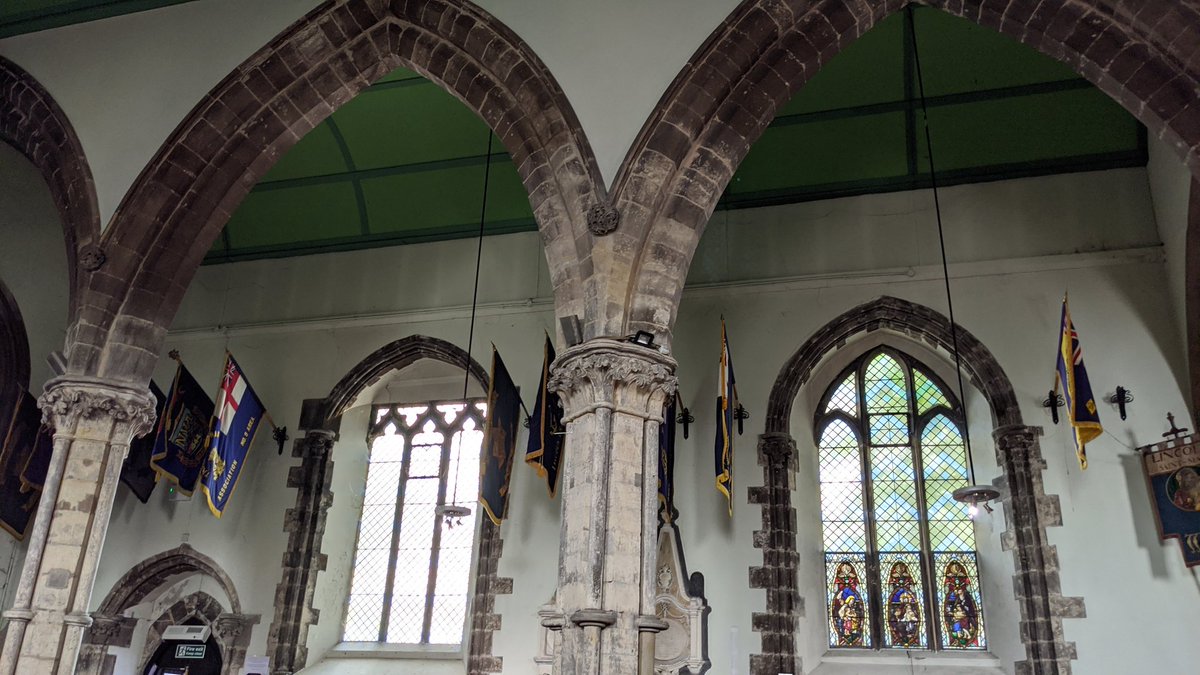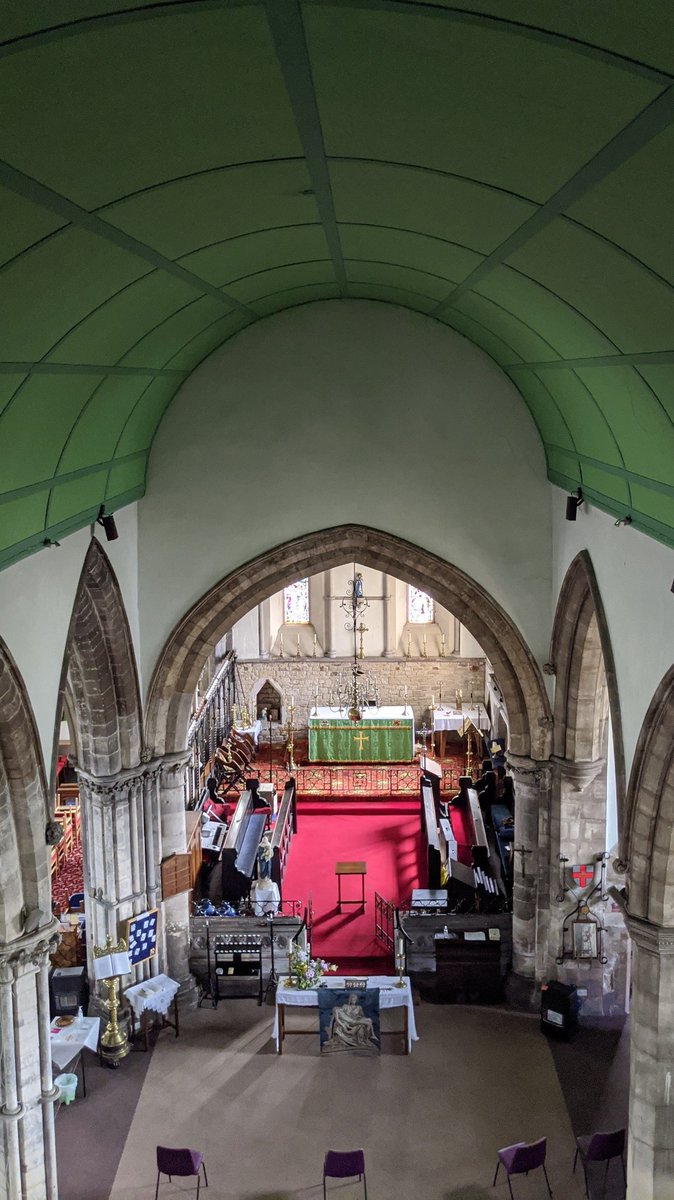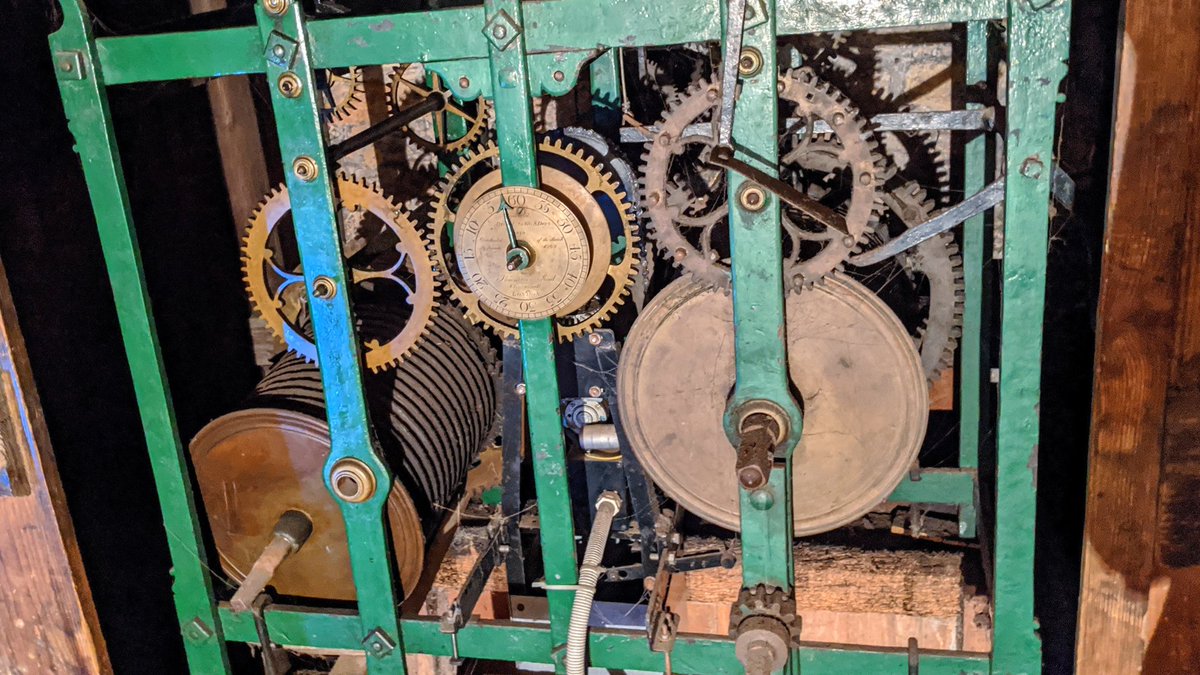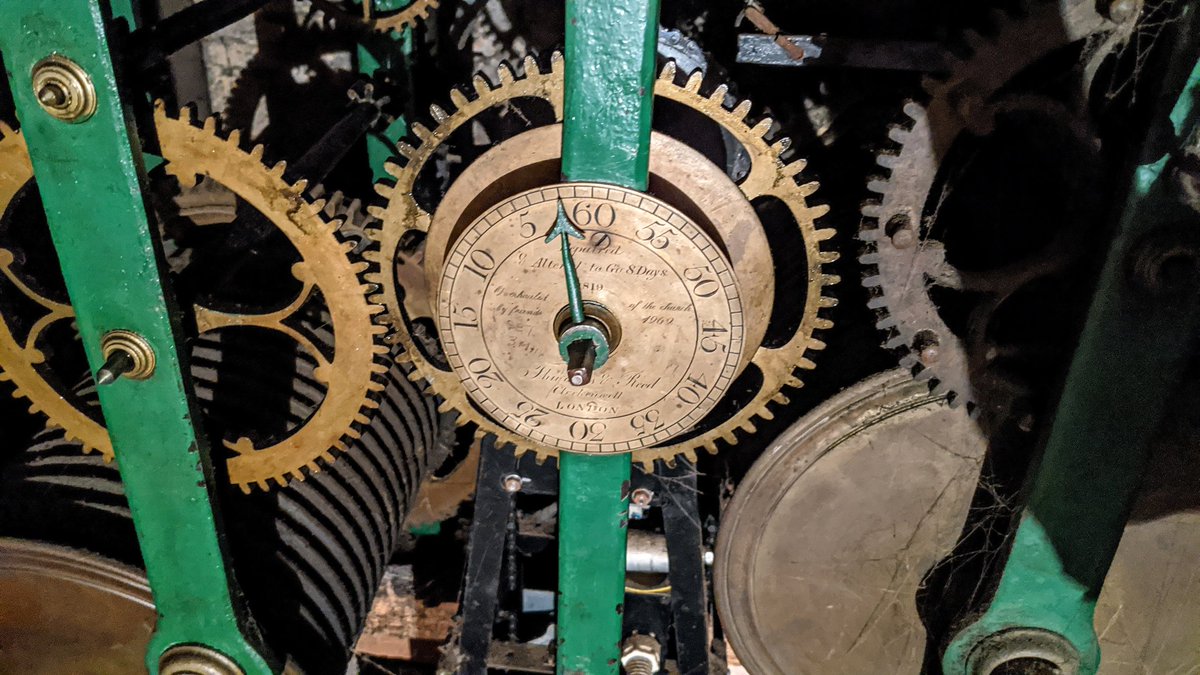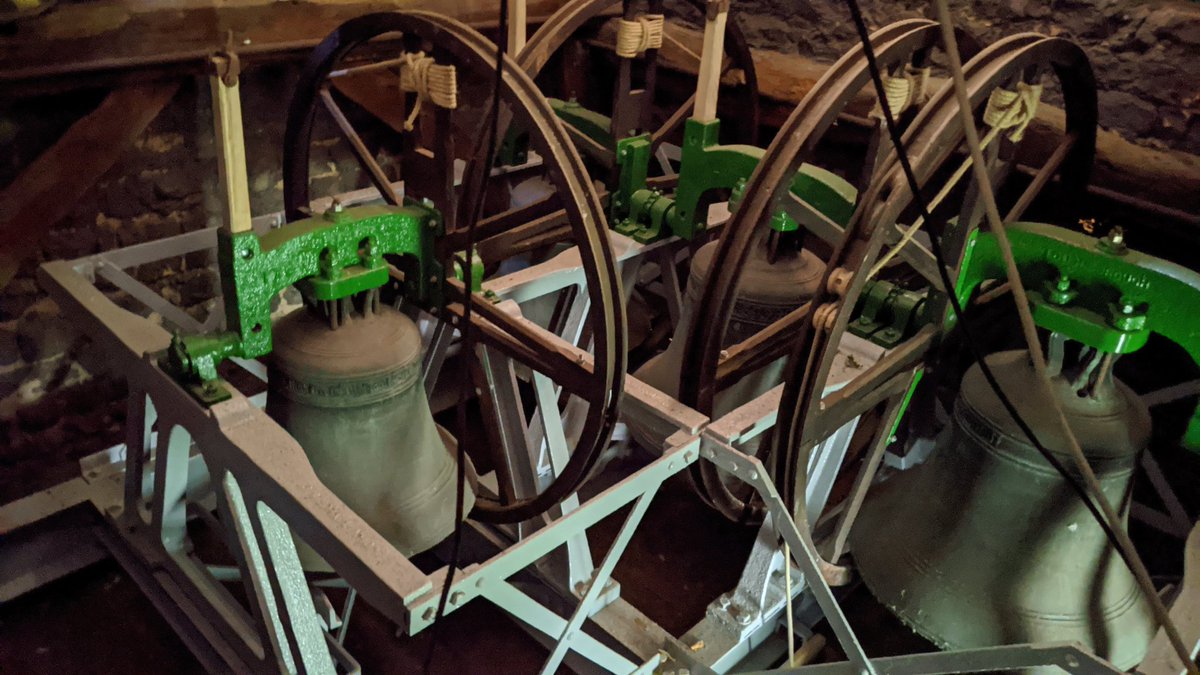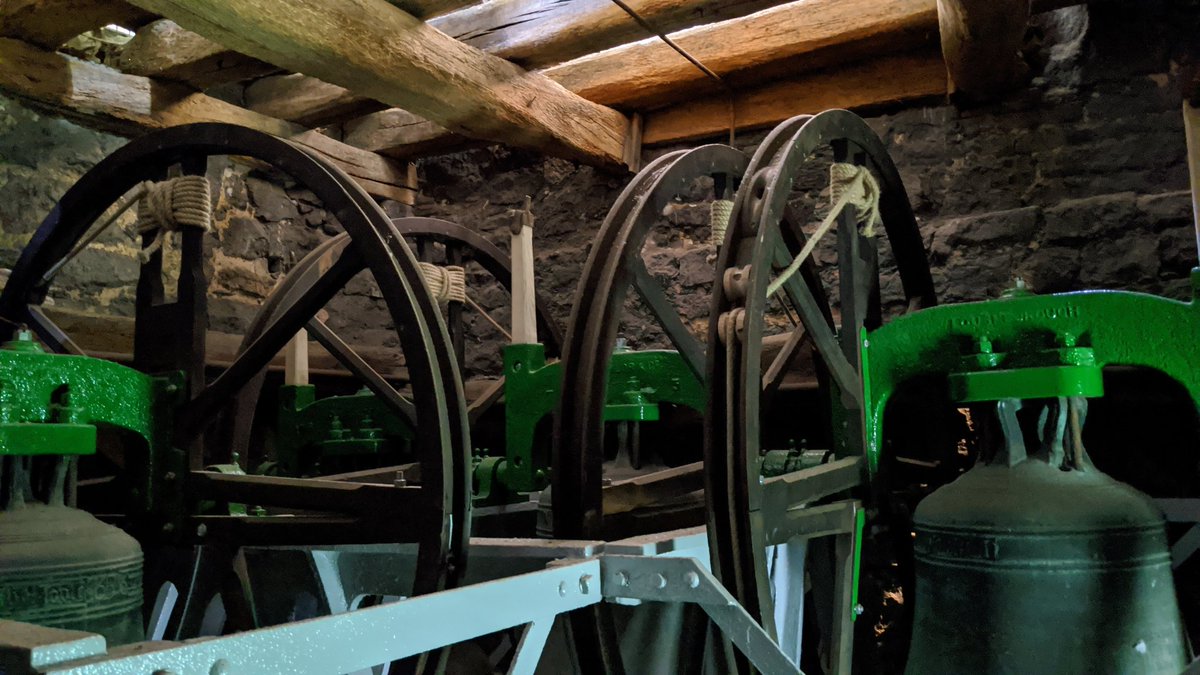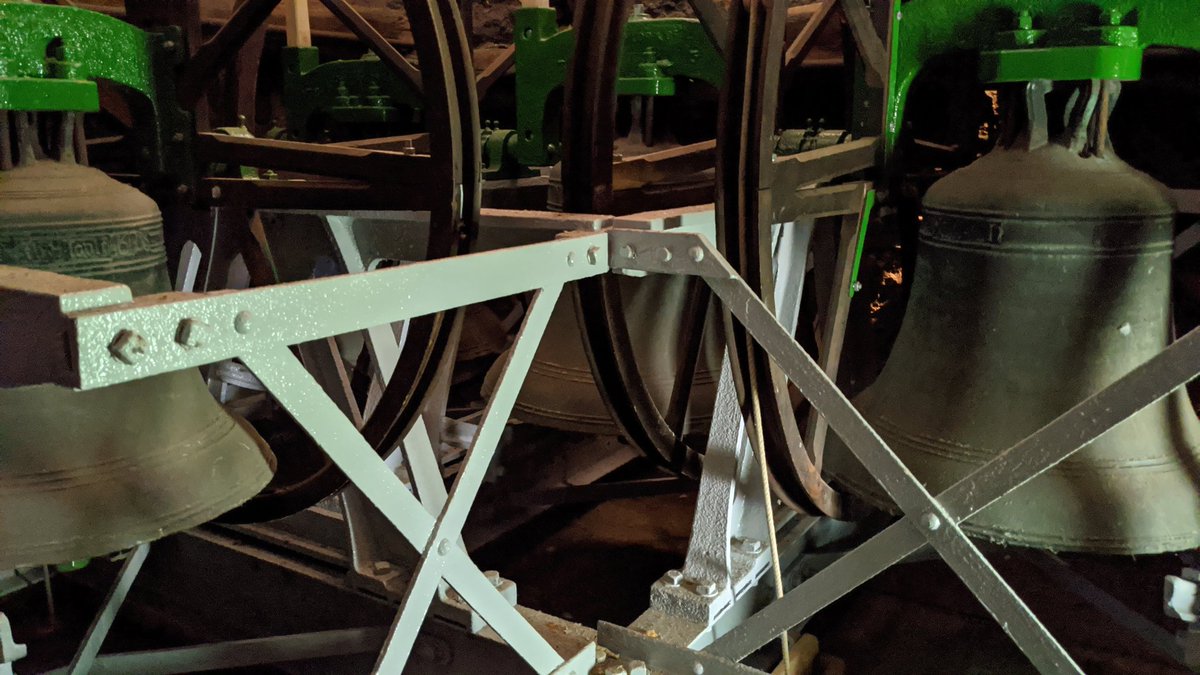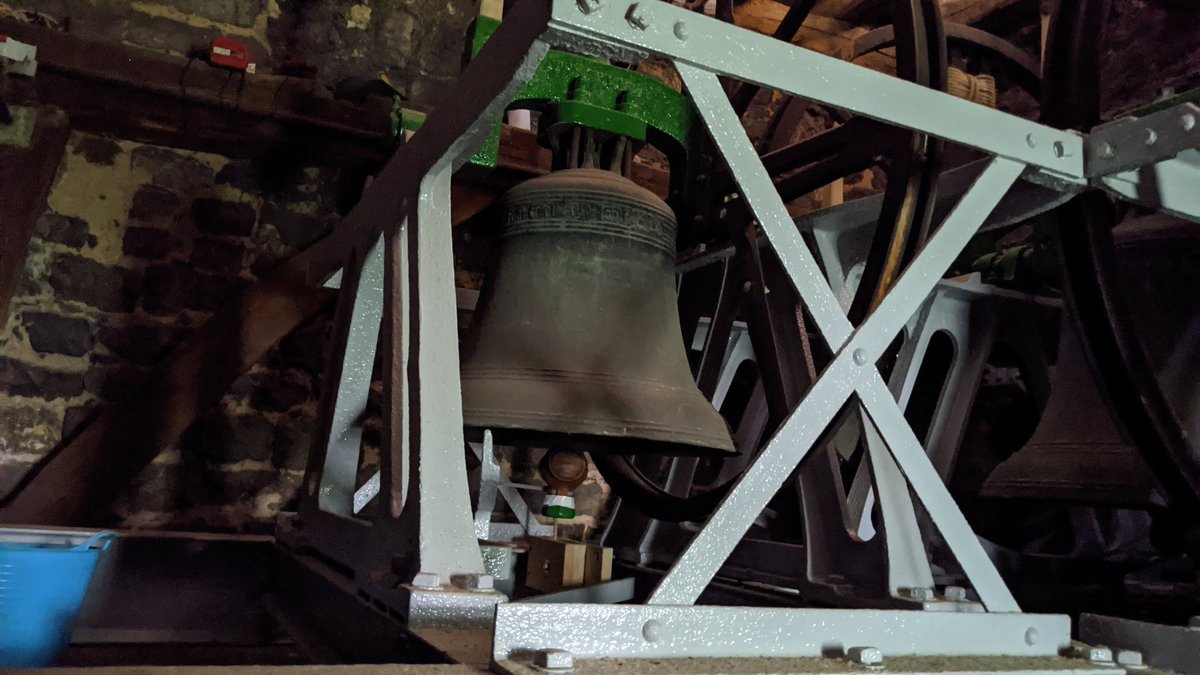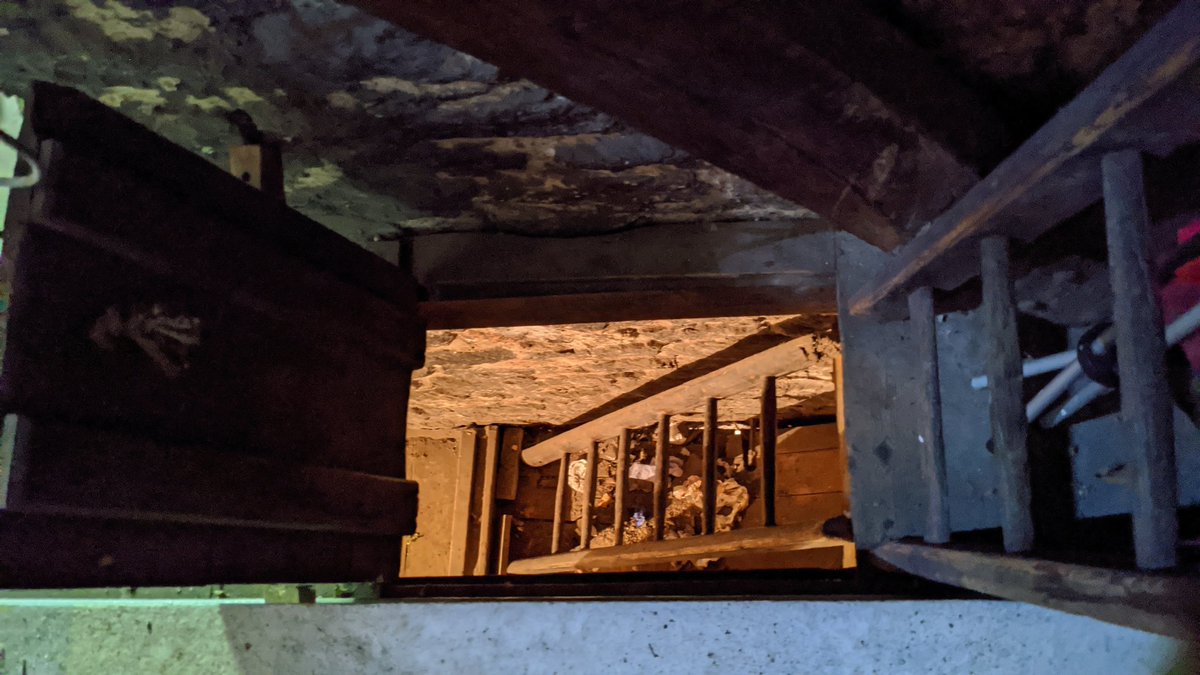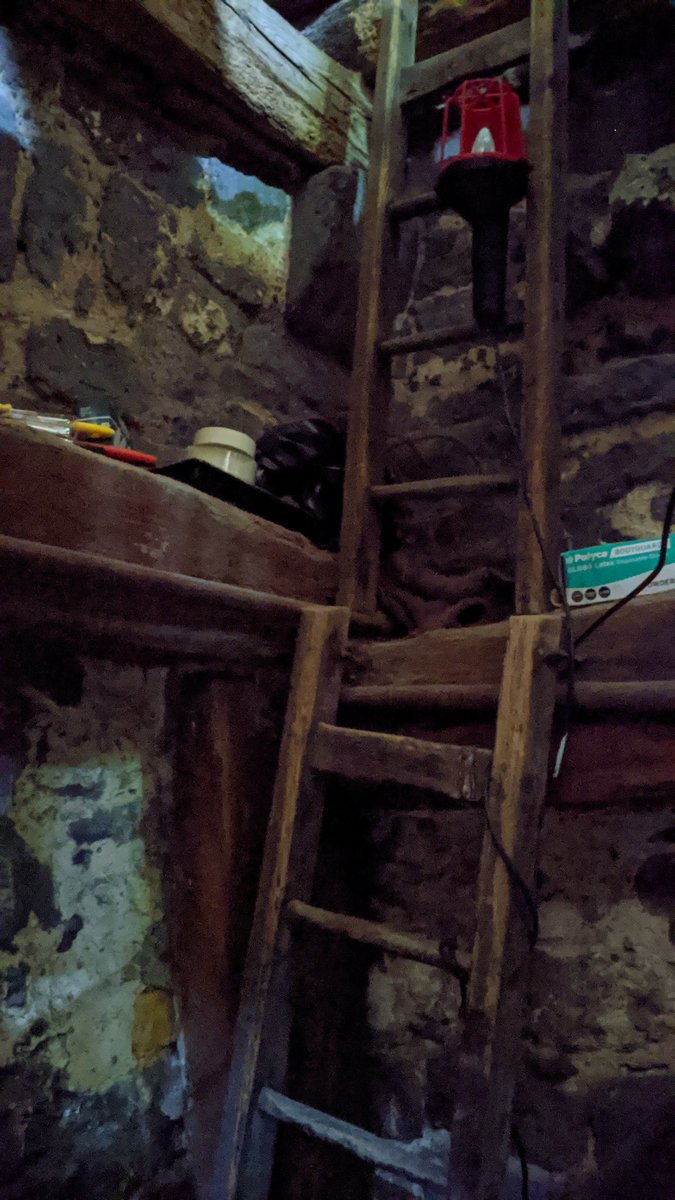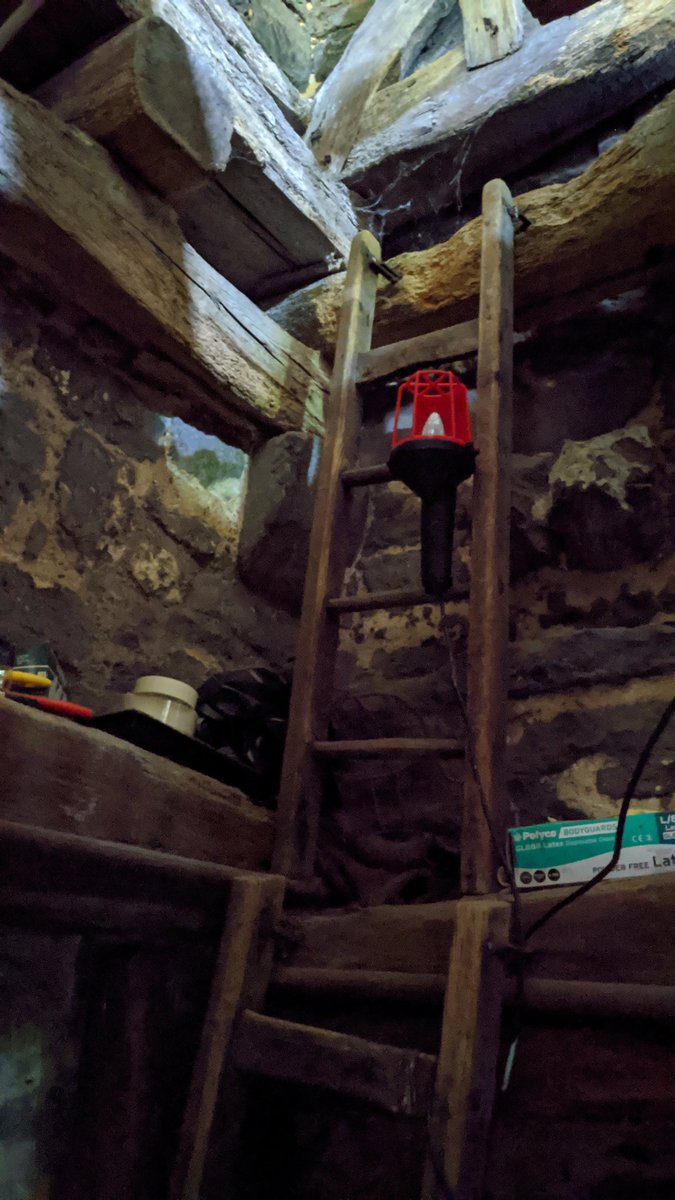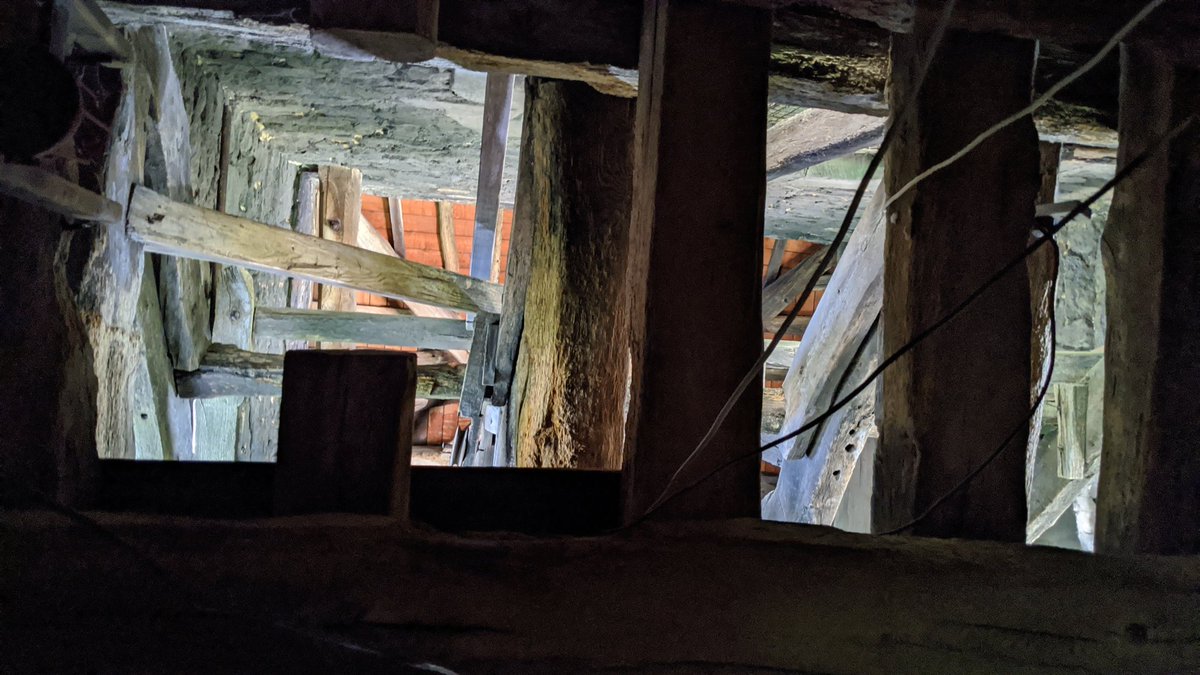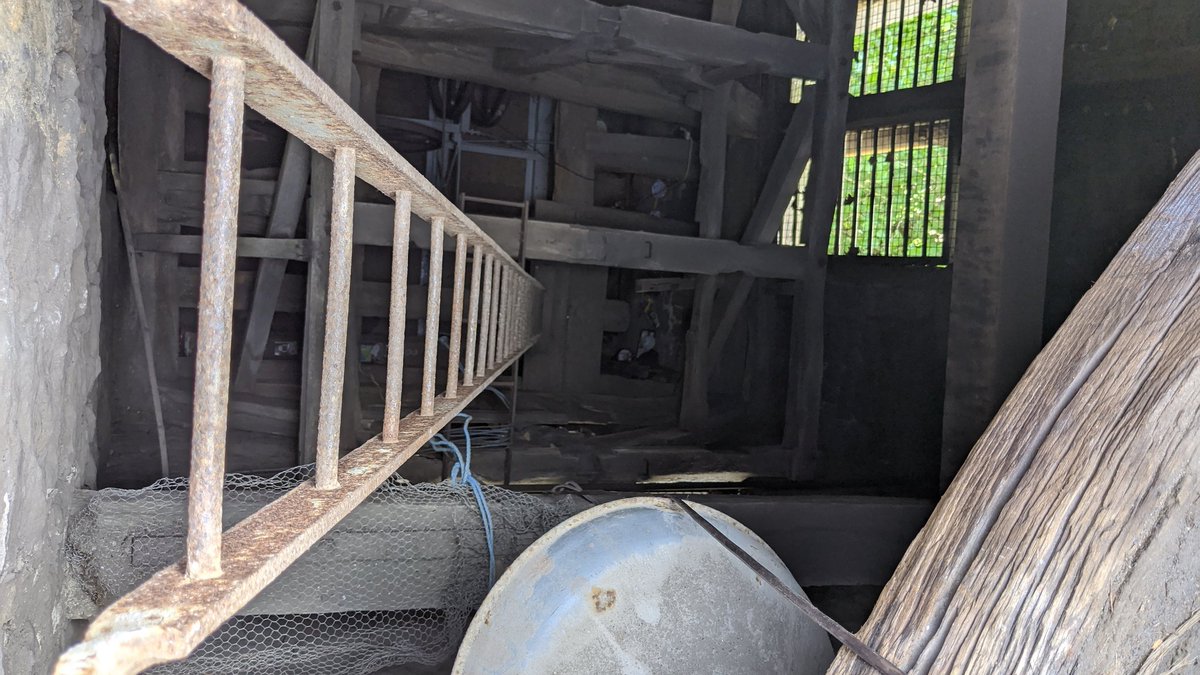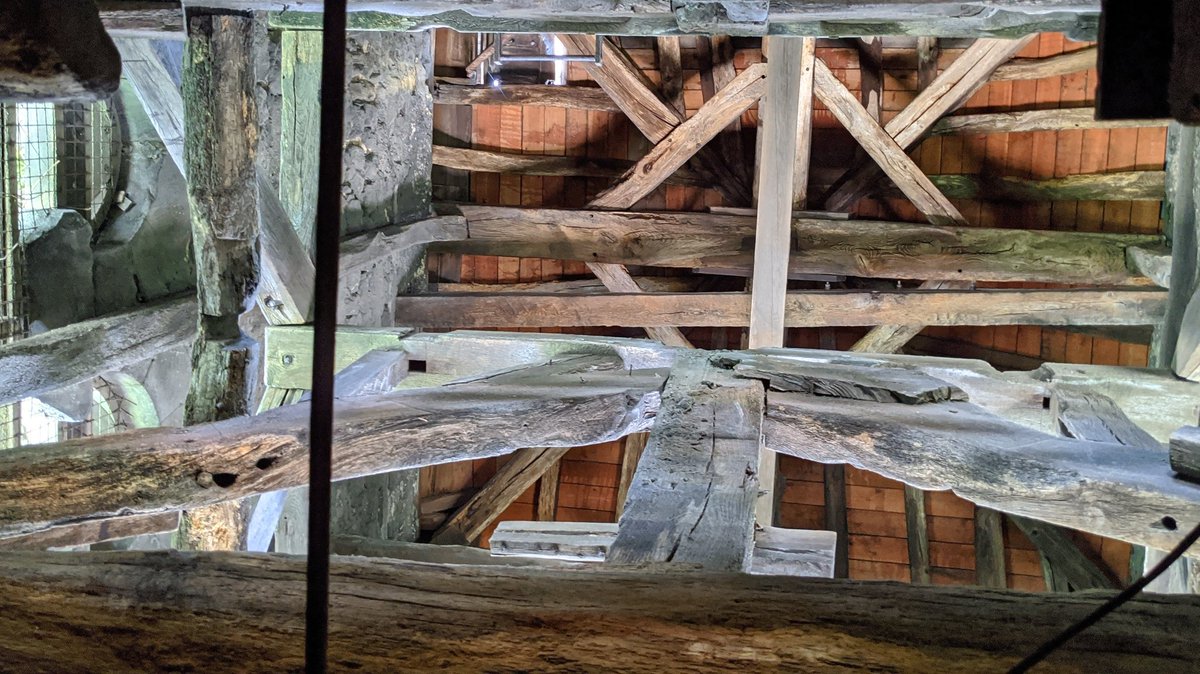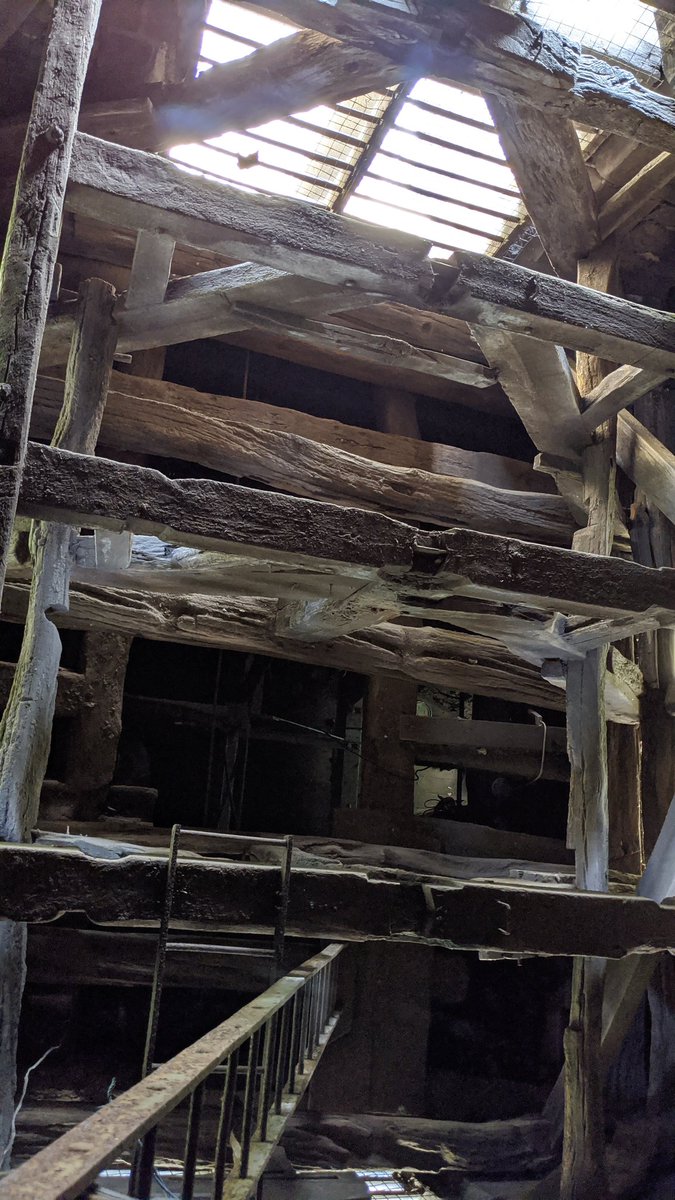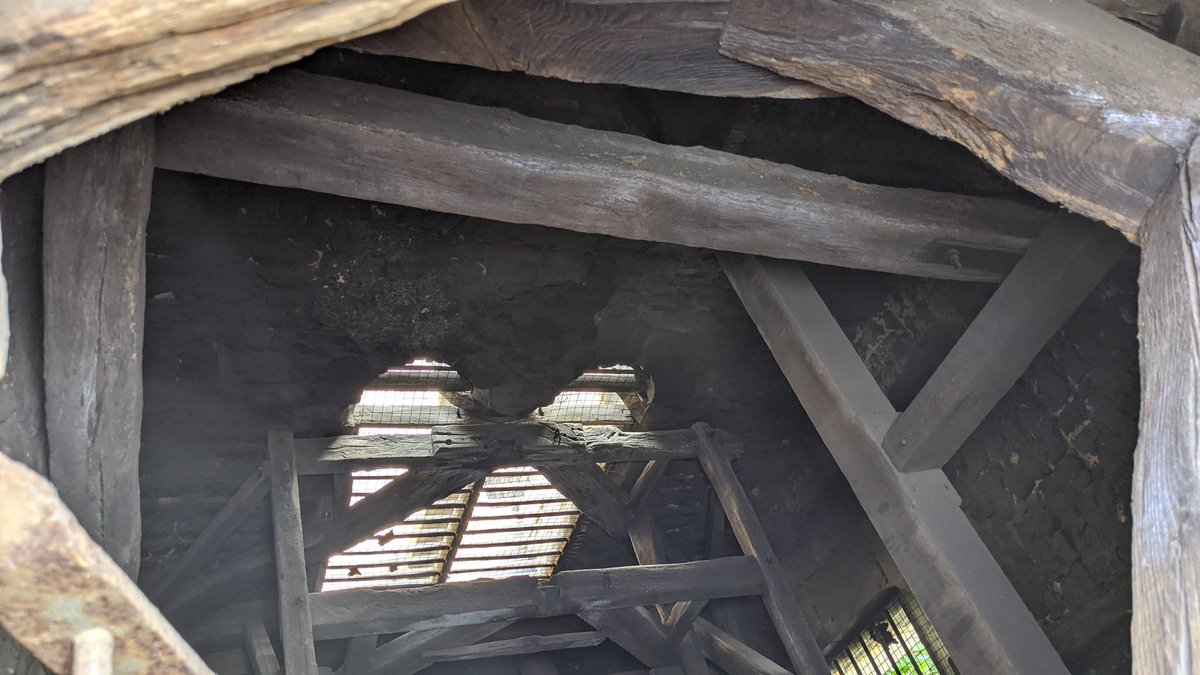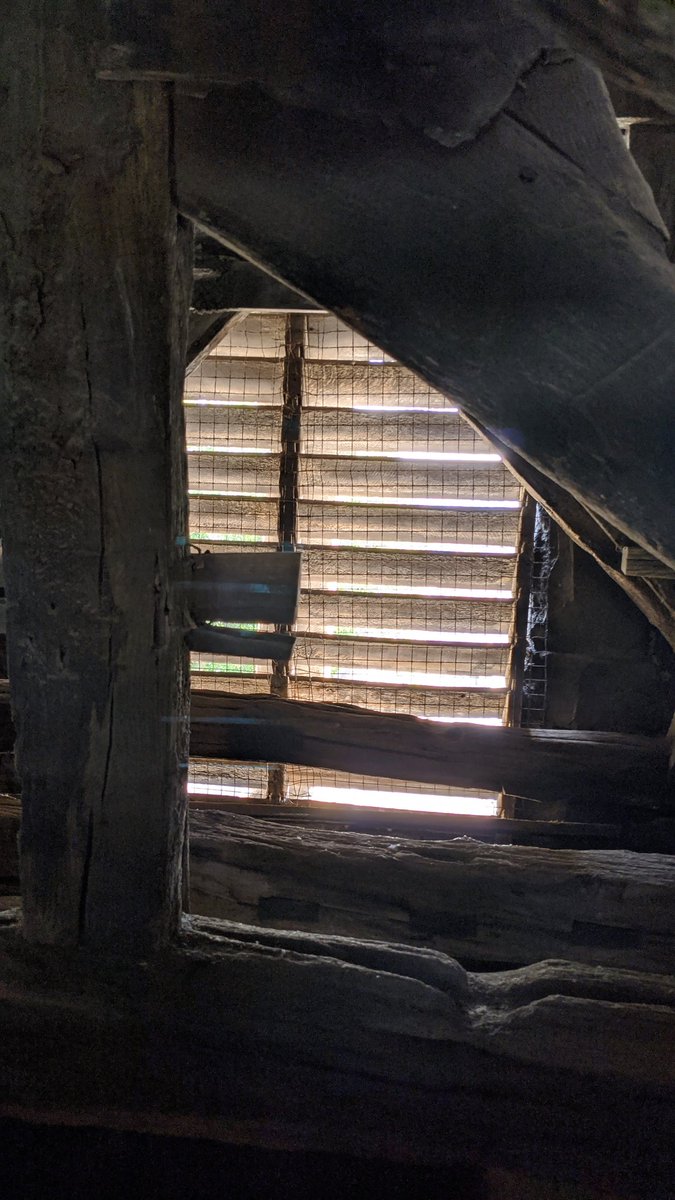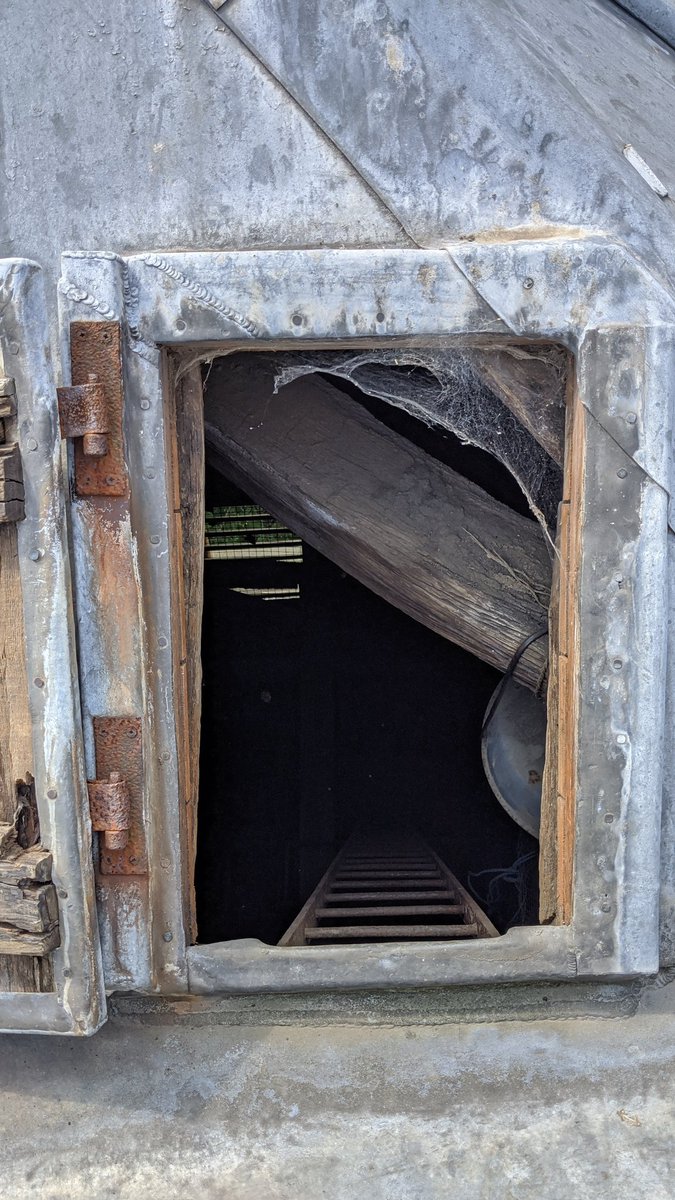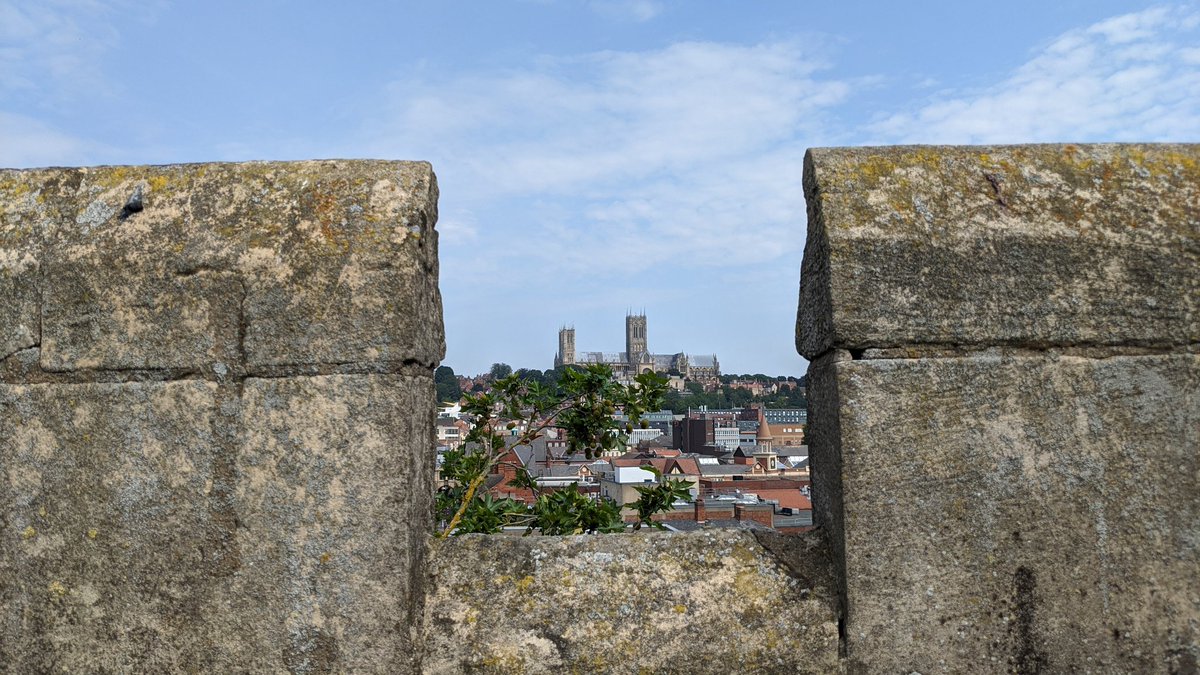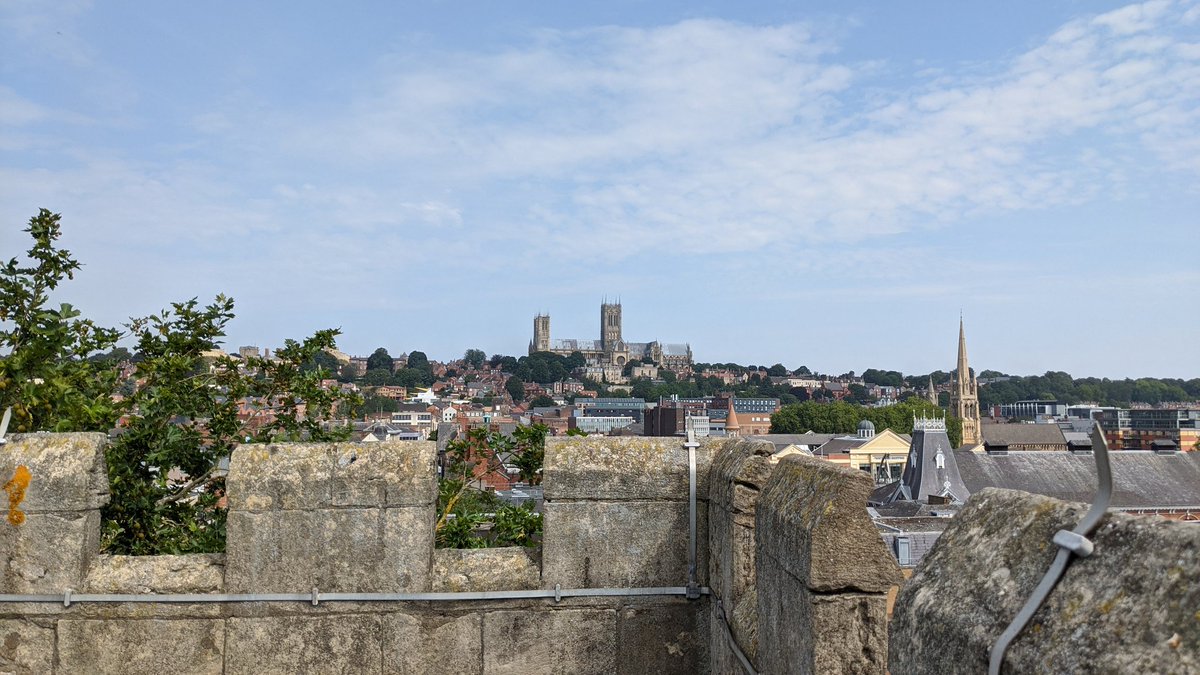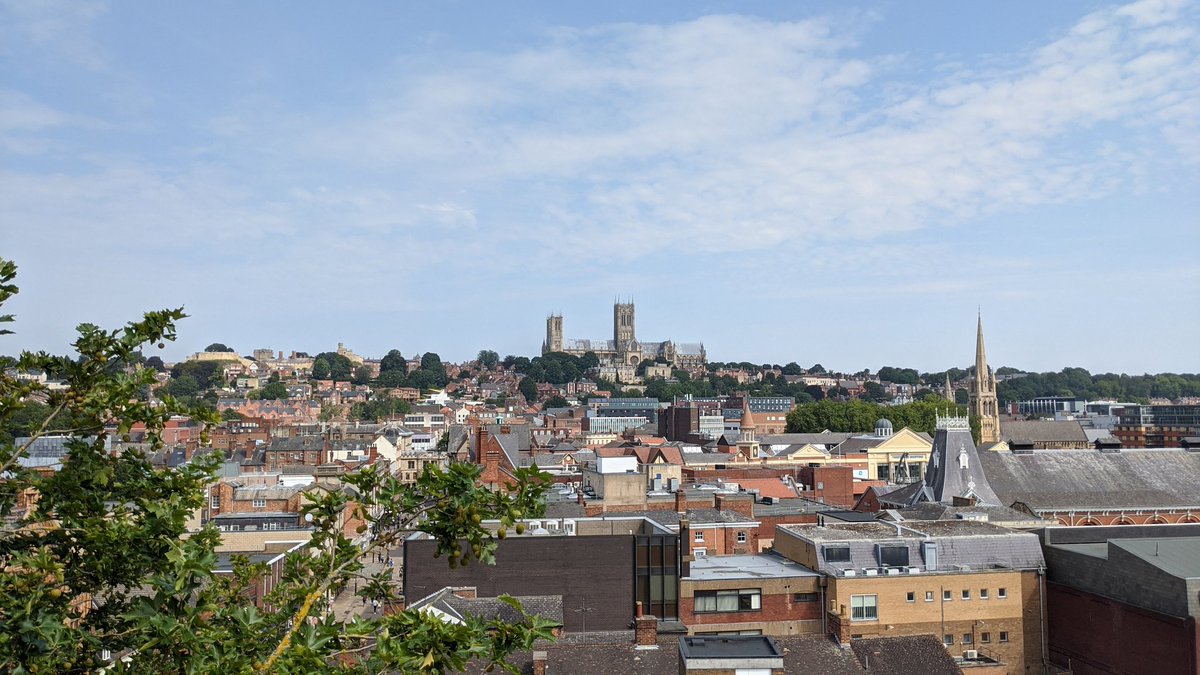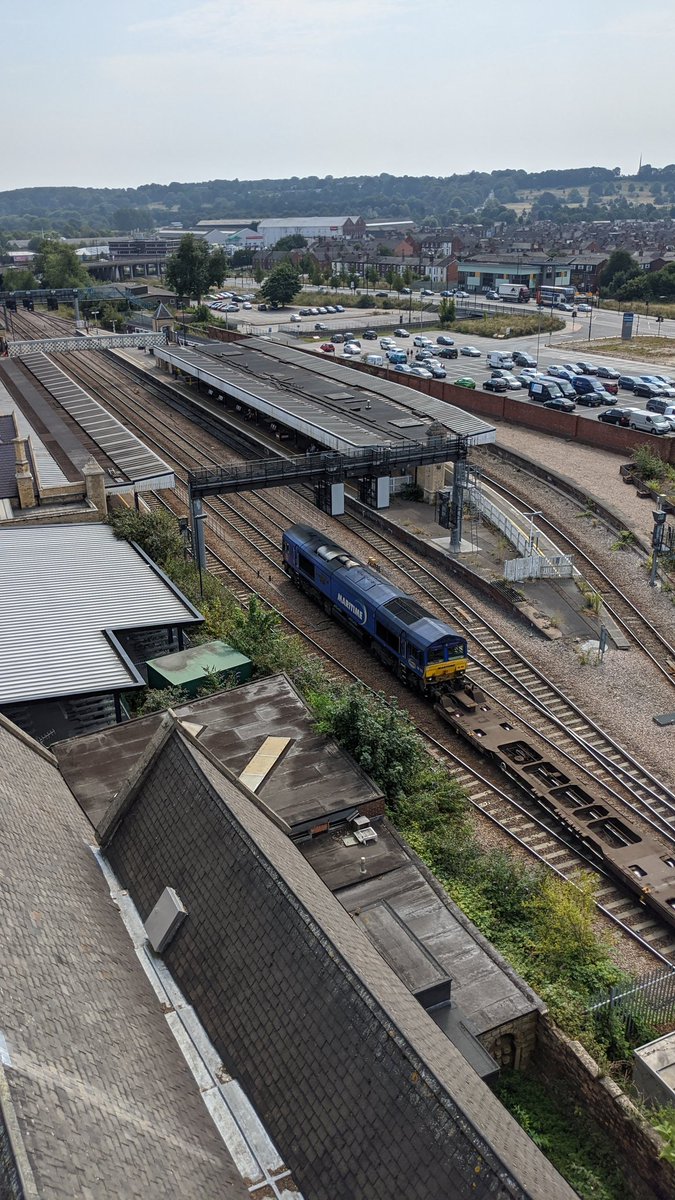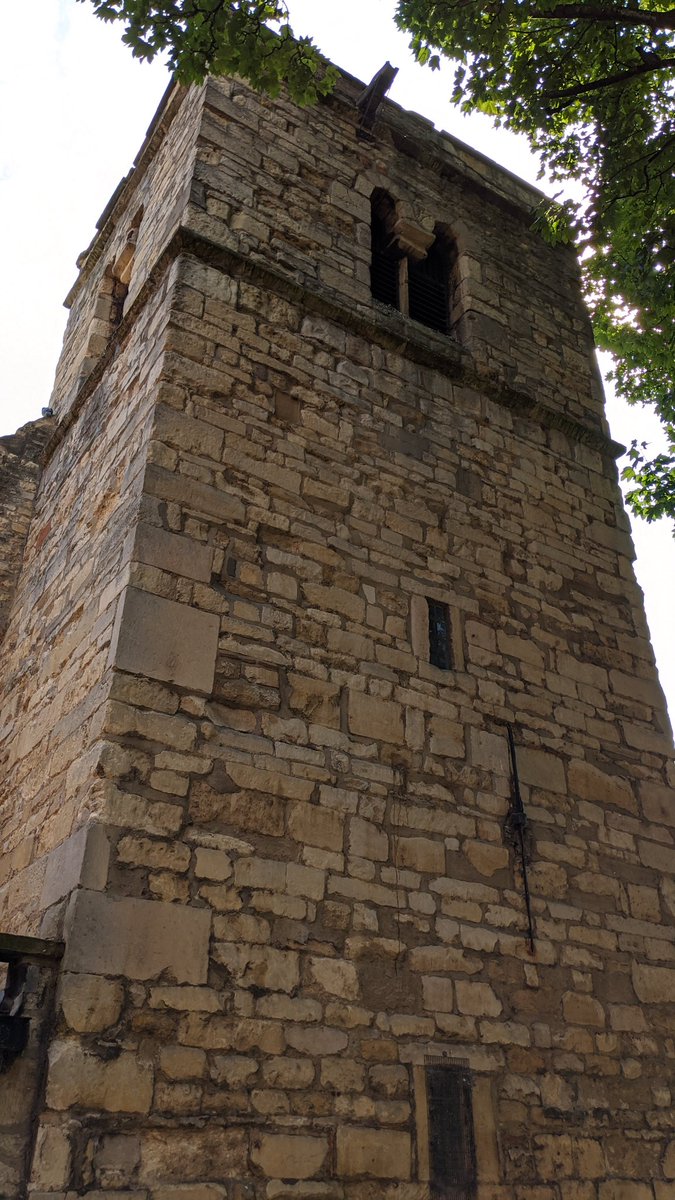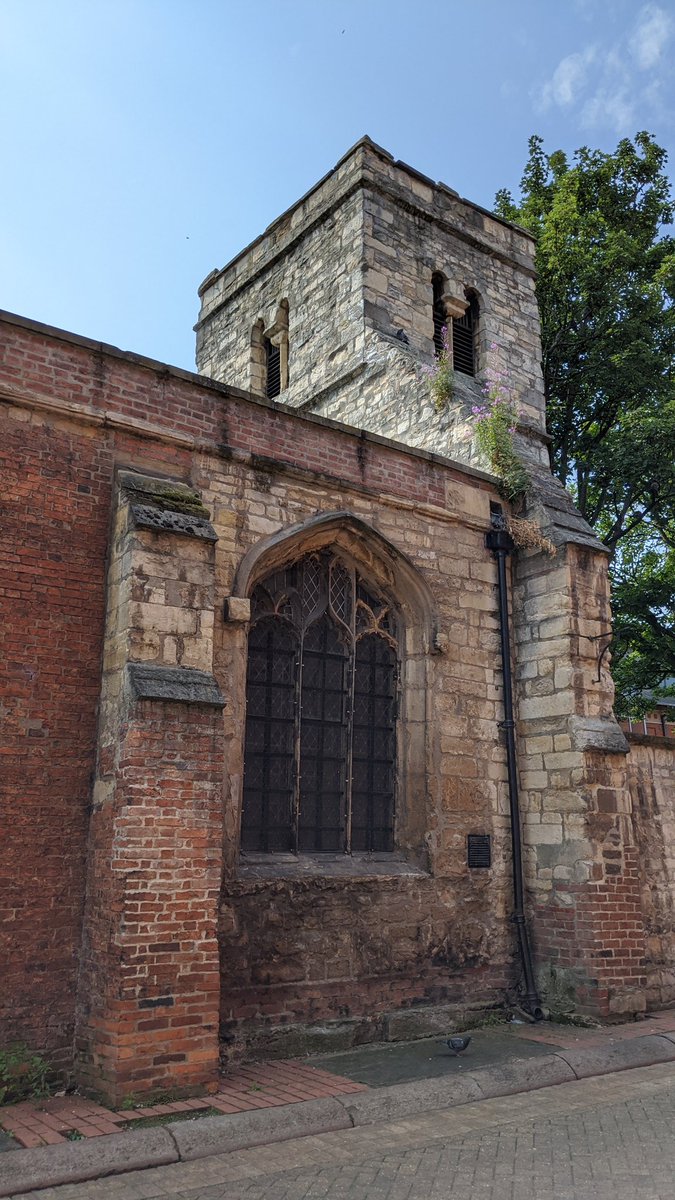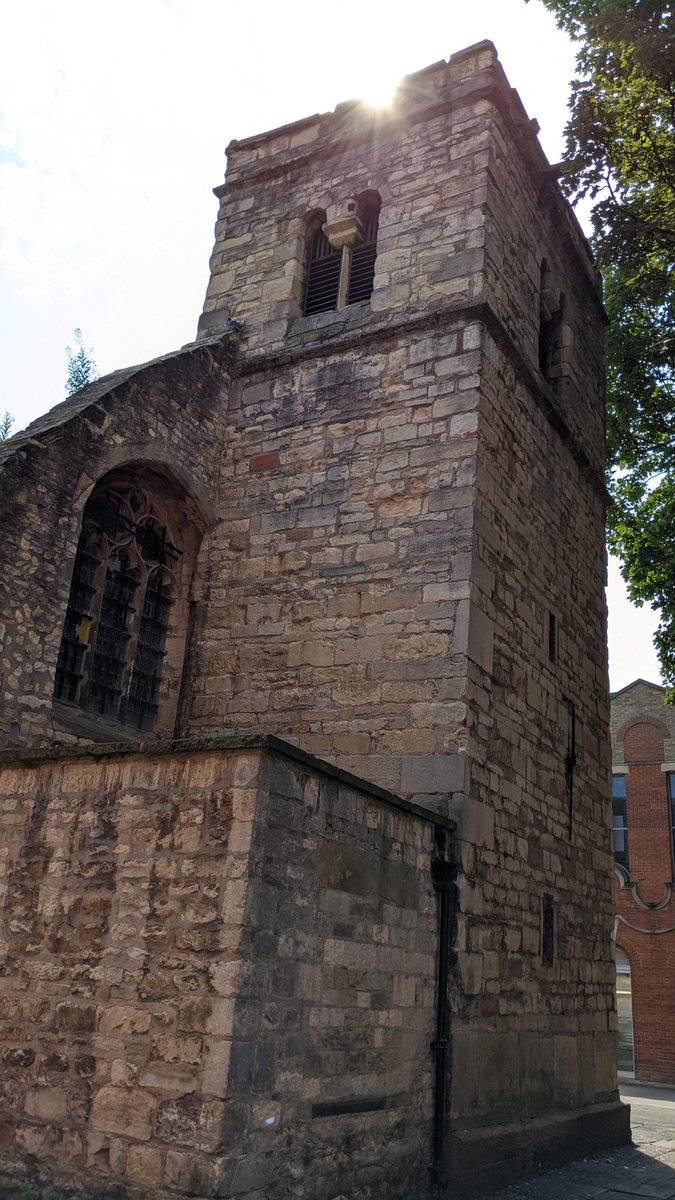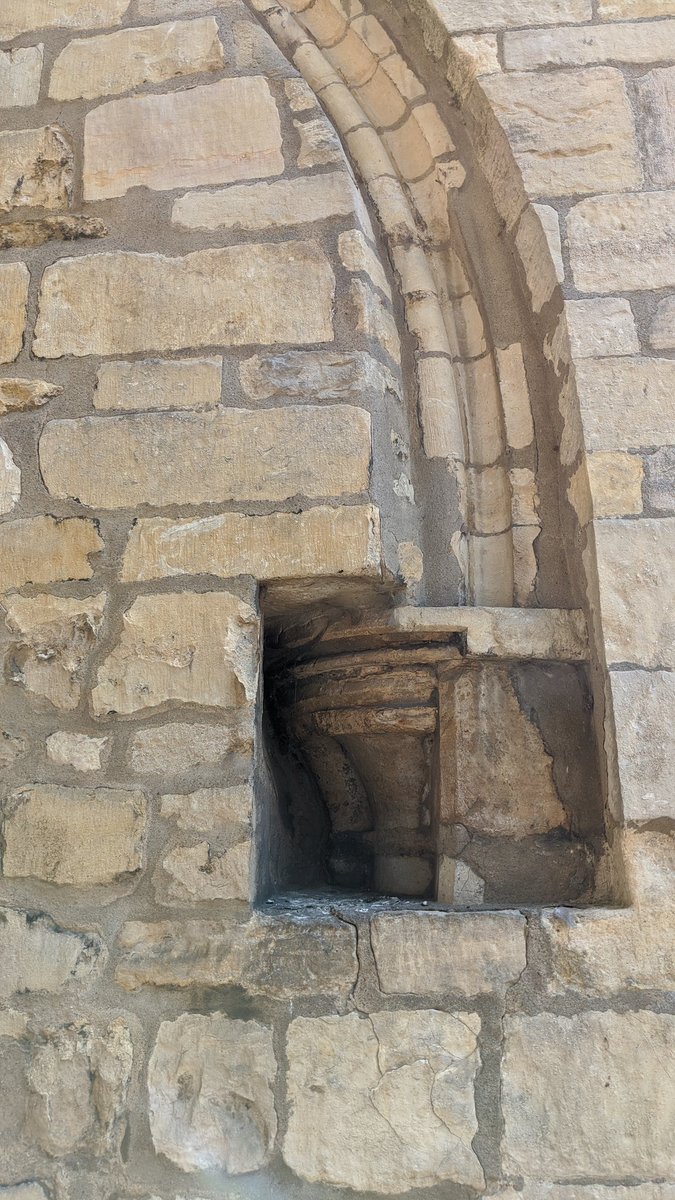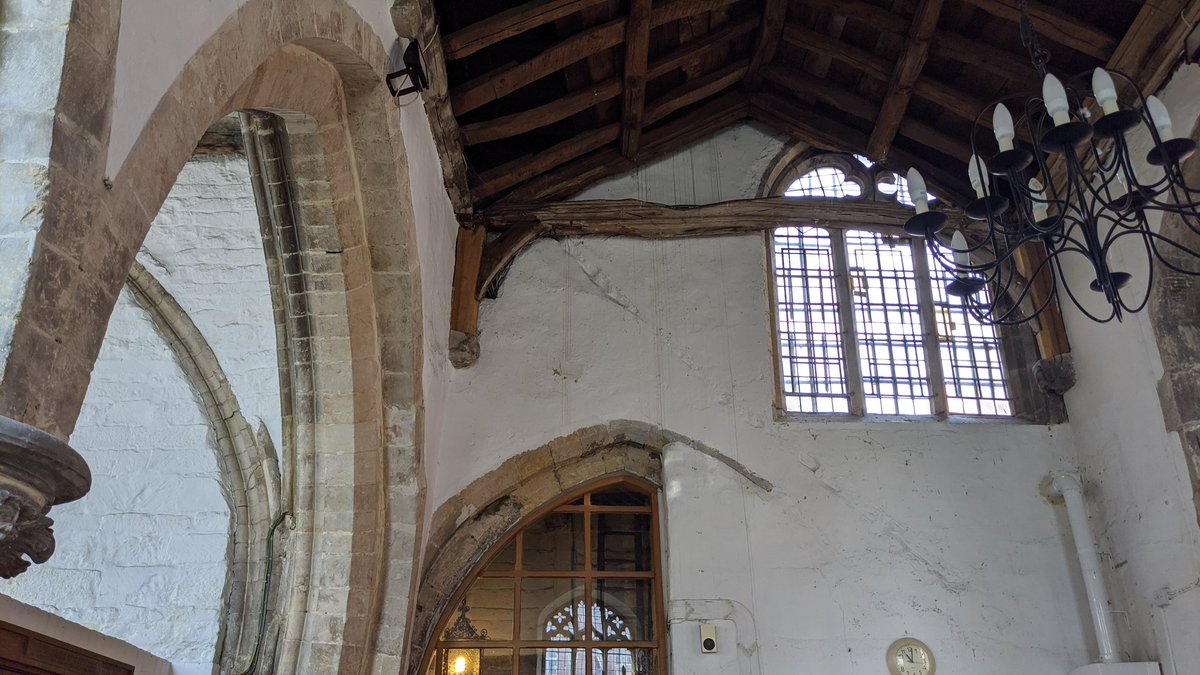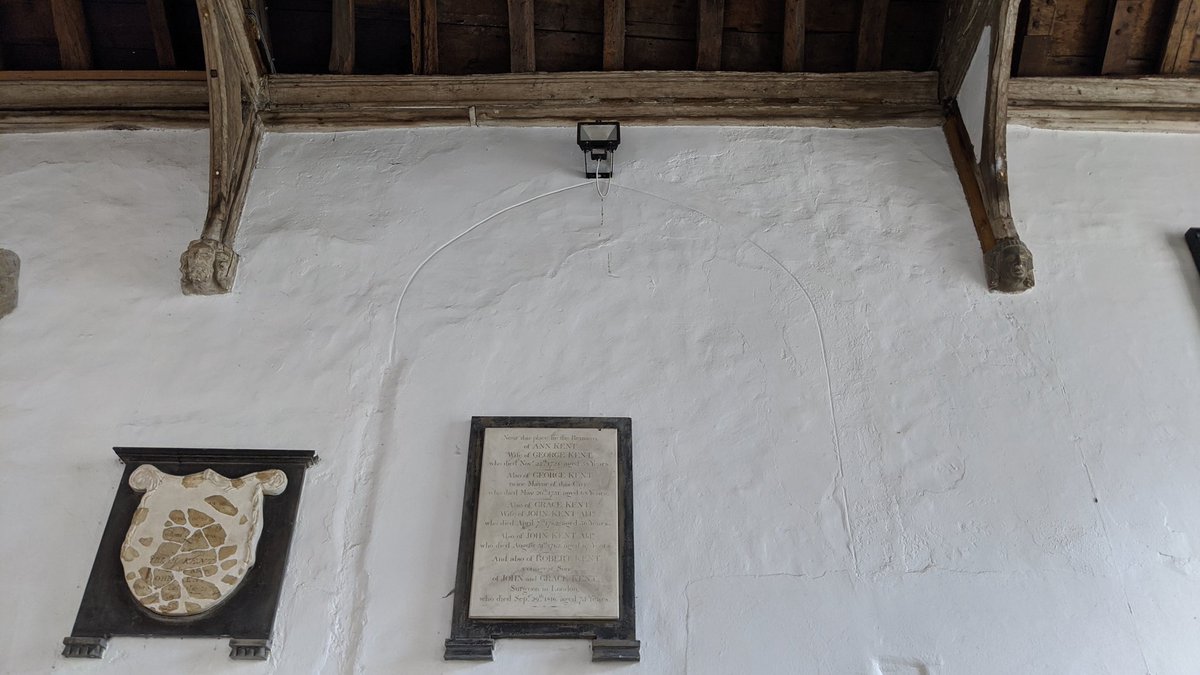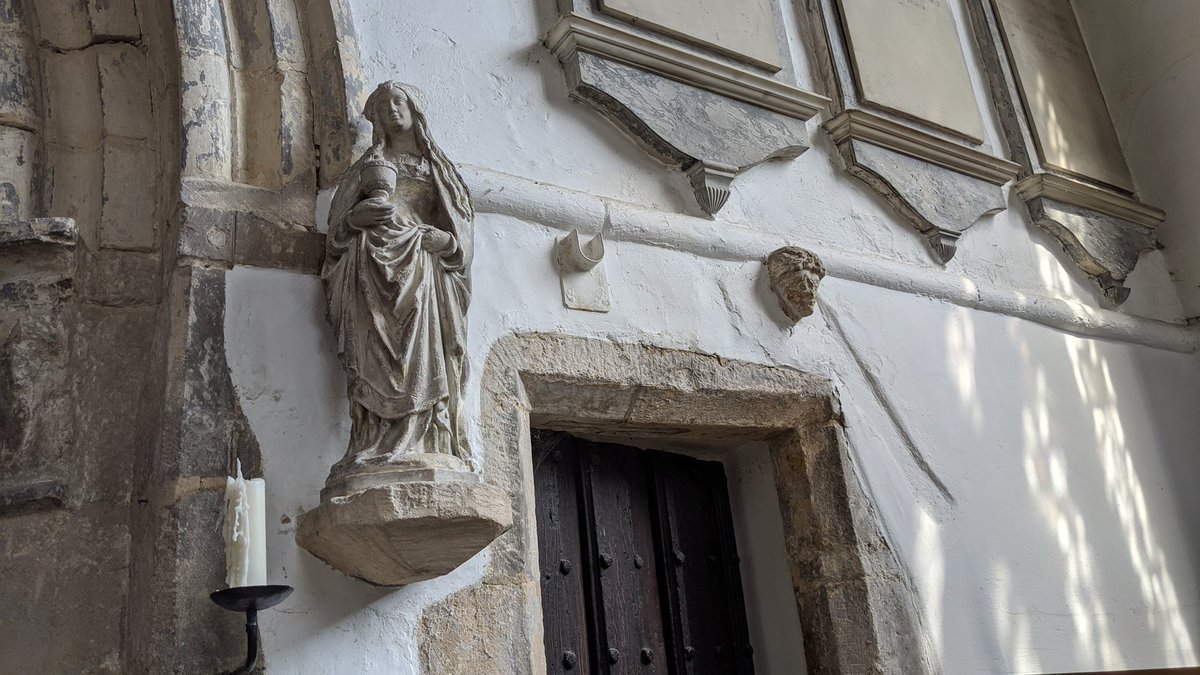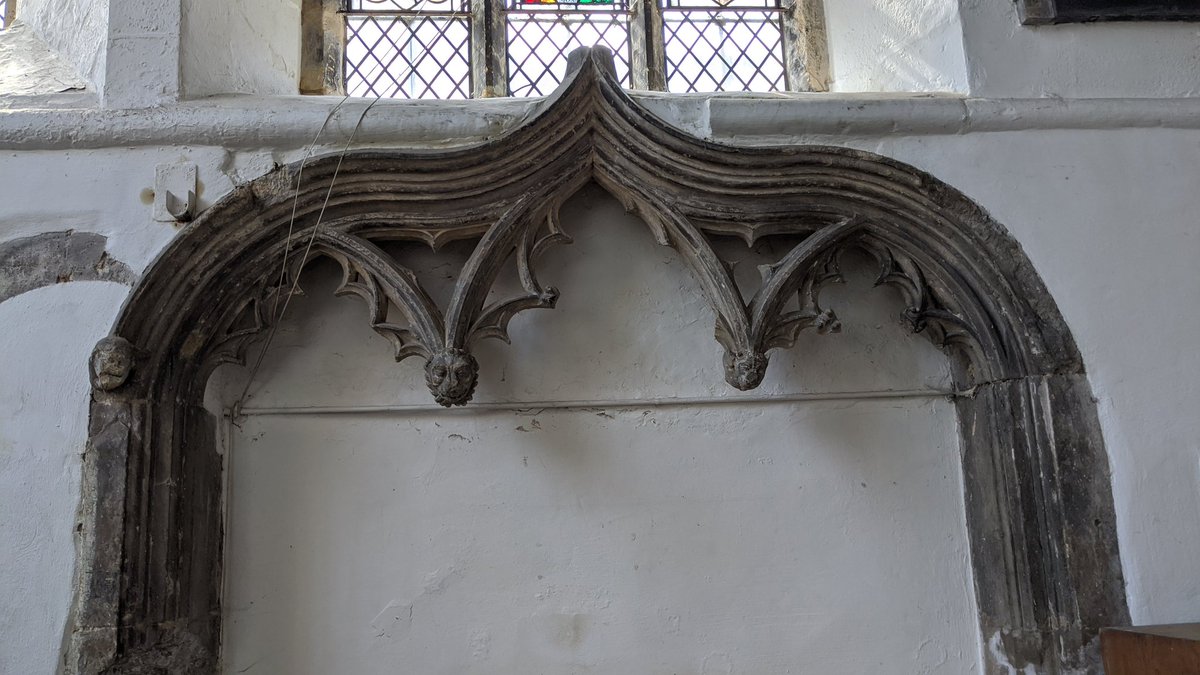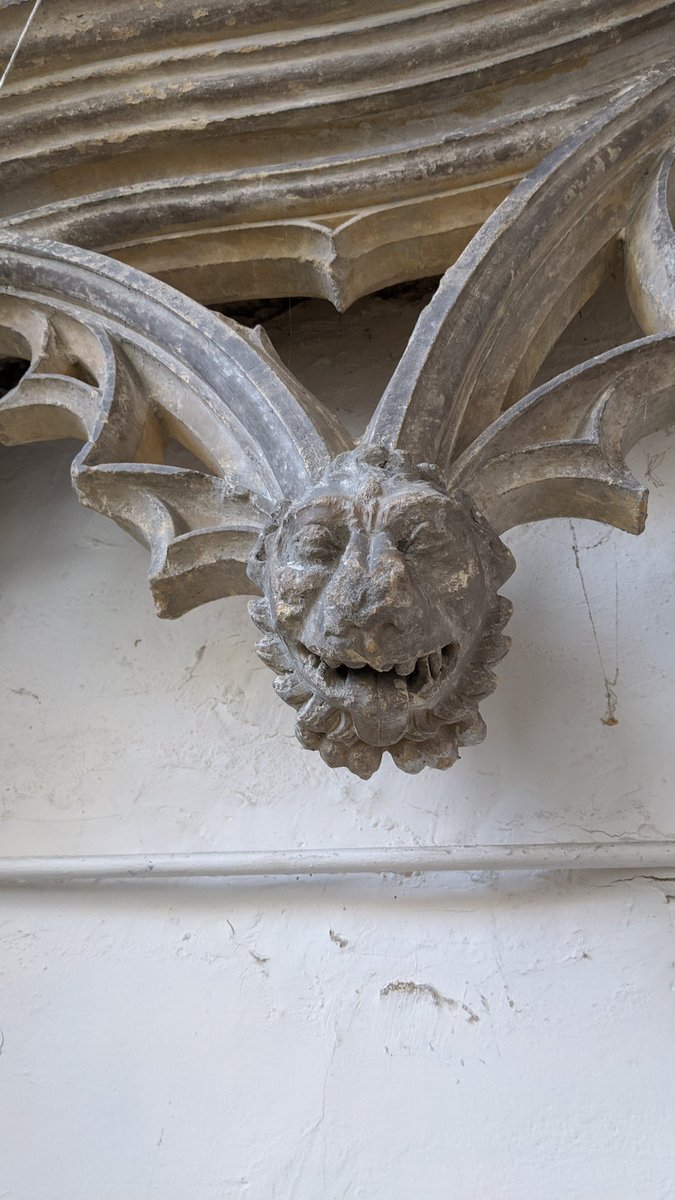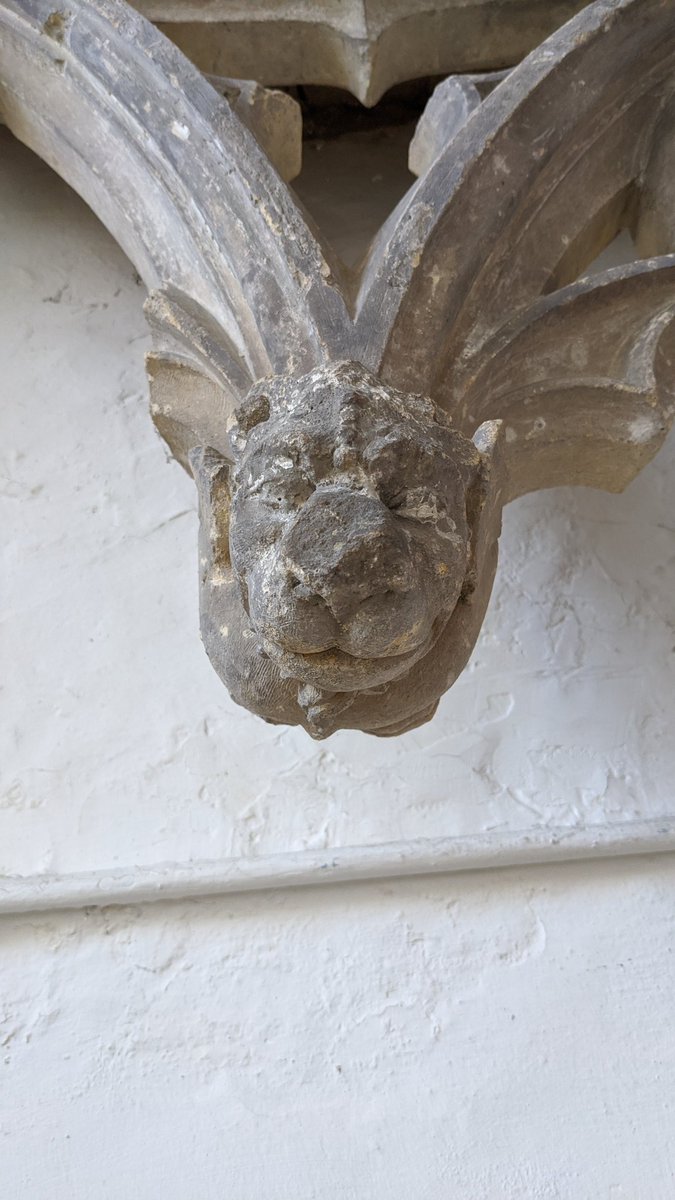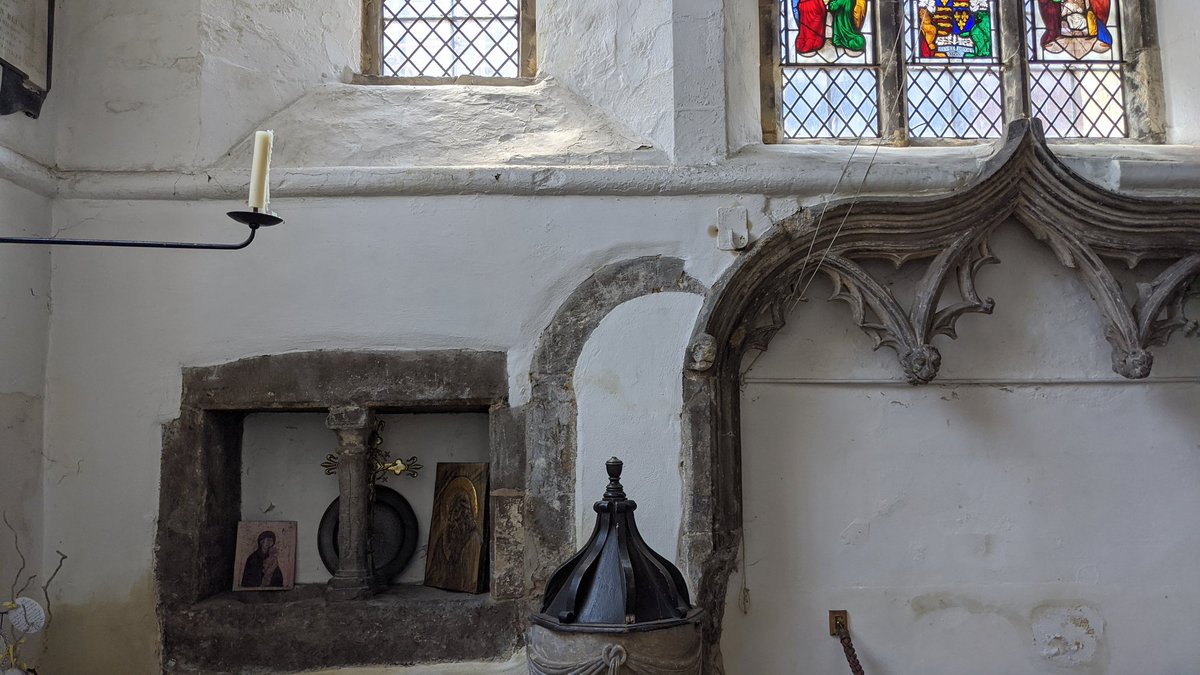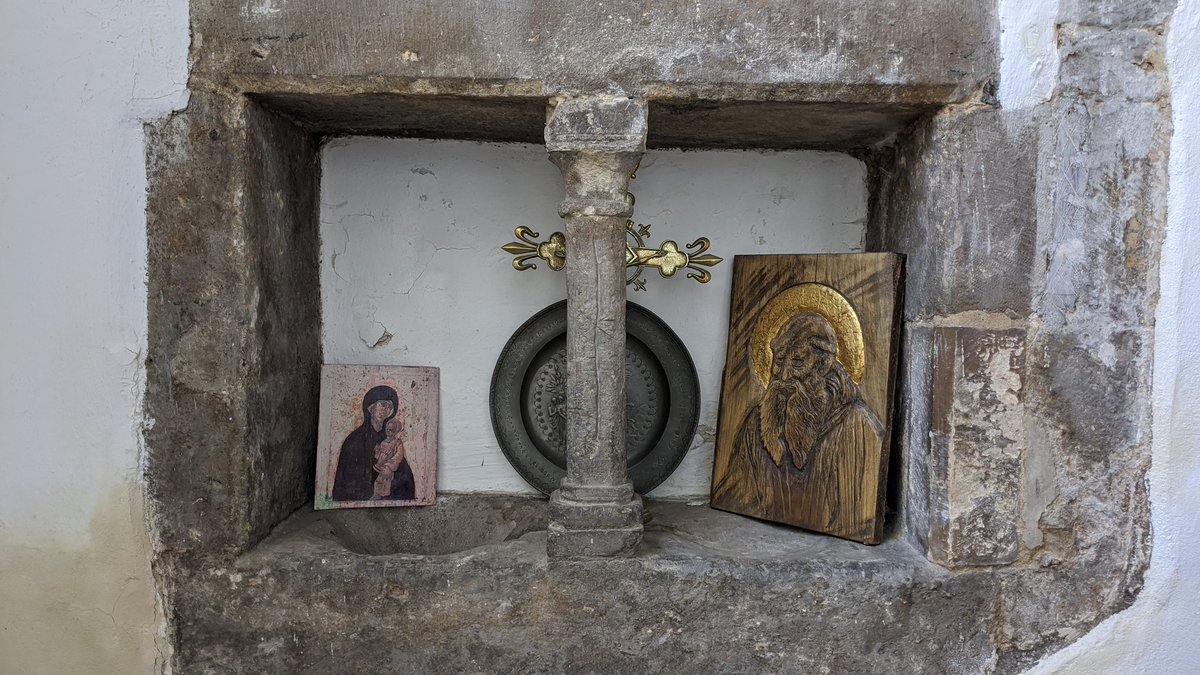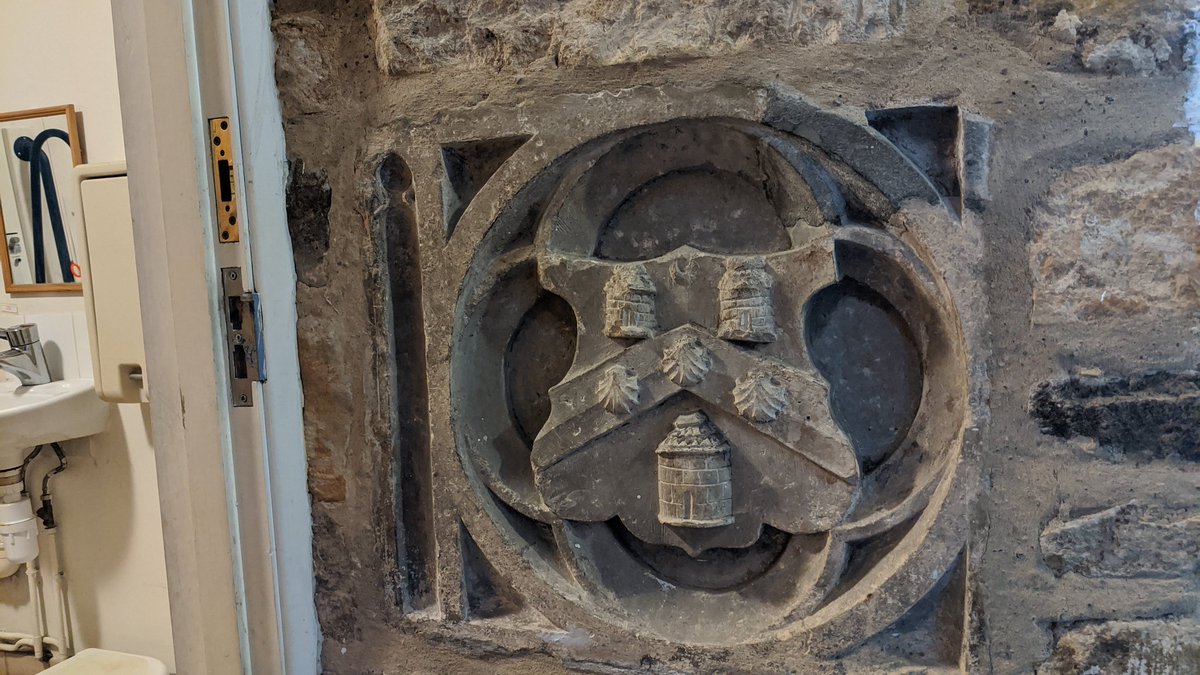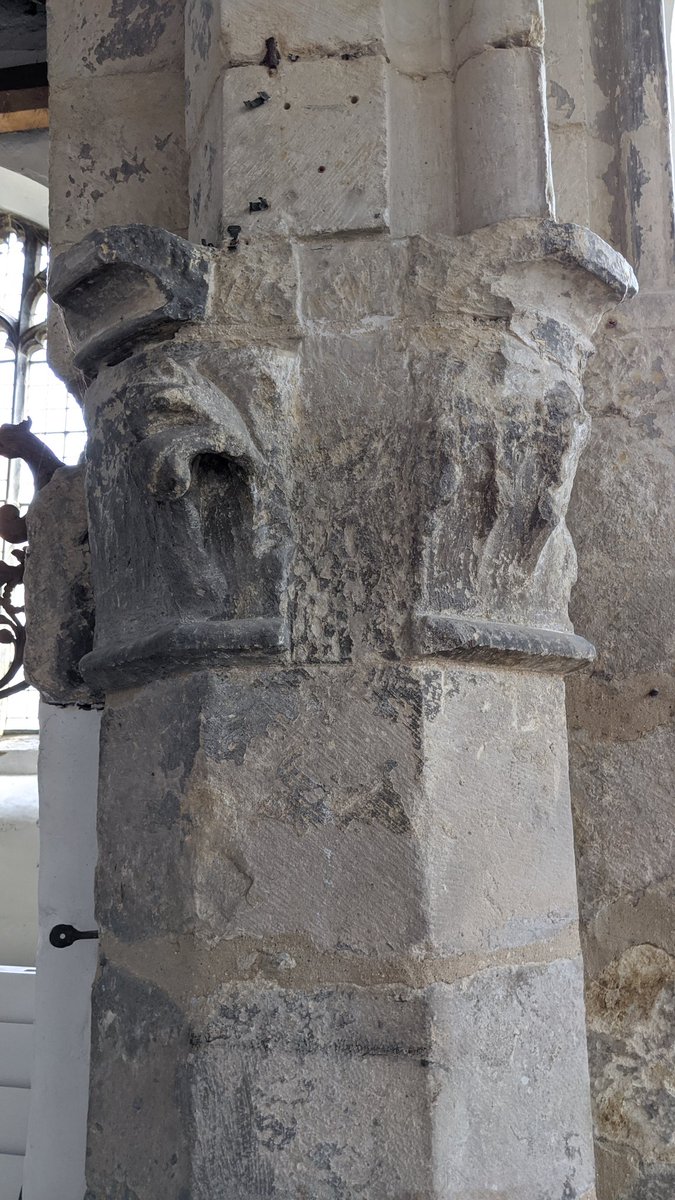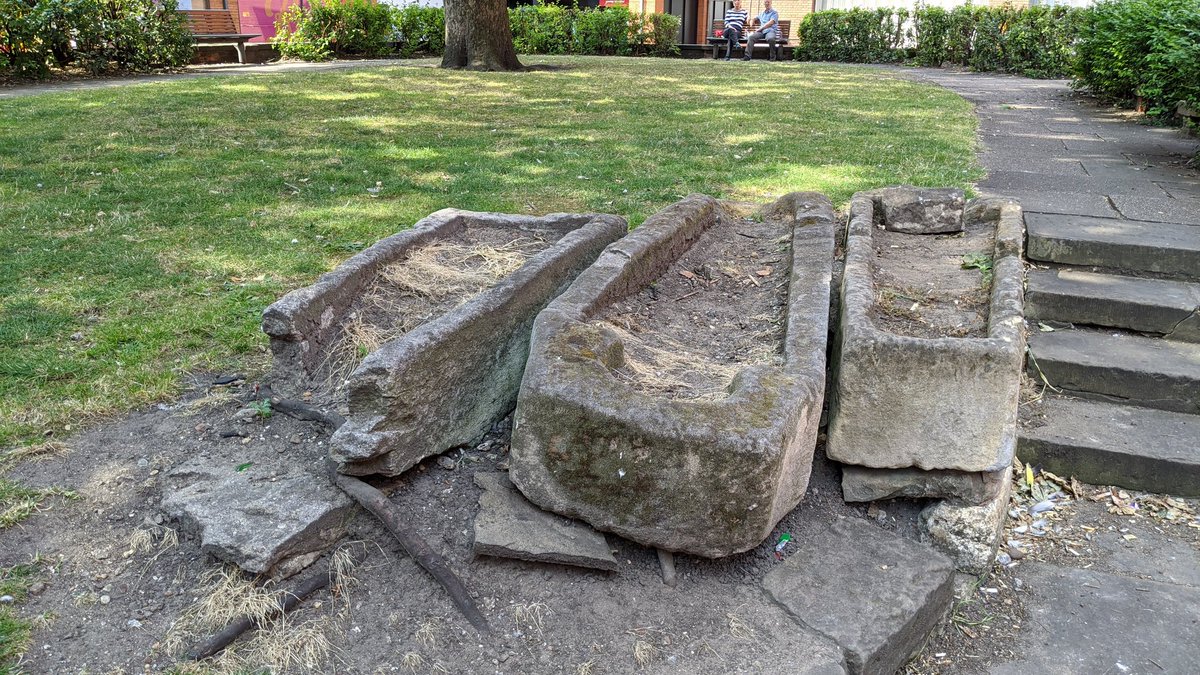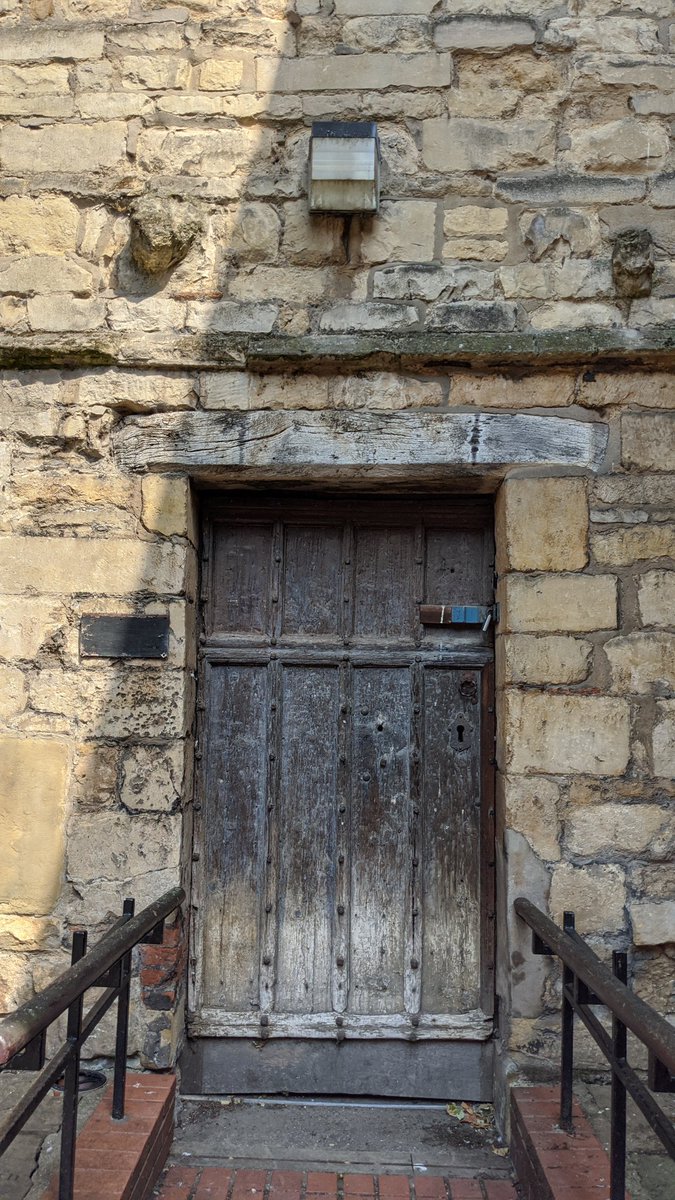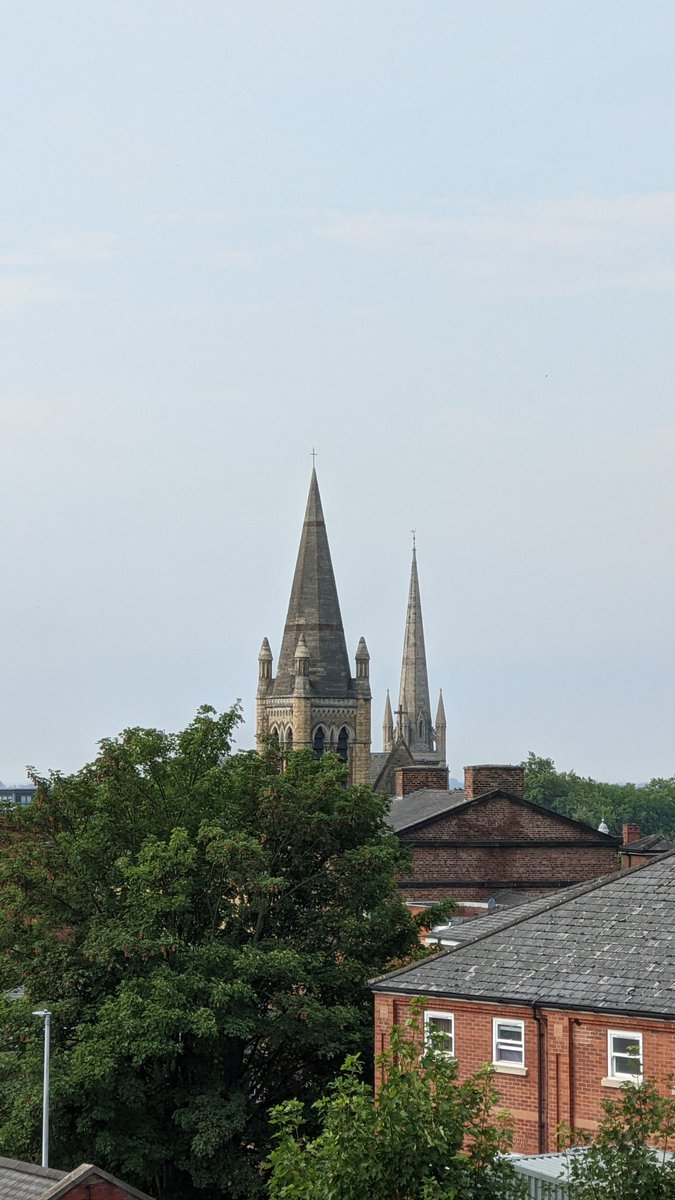Today the excellent @craven_north let me explore a handful of churches in Lincoln. One of them contained the most hair-raising climb to the top of a church tower I& #39;ve experienced to date.
Let& #39;s go look at some pictures, eh?
Let& #39;s go look at some pictures, eh?
First I visited St Peter at Gowts, a handsome old church with a tower from the 1000& #39;s
St Peter at Gowts, Lincoln, has a handsome rederos, hanging cross, war memorial, and organ loft - all Victorian or later, of course.
Even her aisle ceilings are charmingly painted. It& #39;s so easy to go wrong with green, but this shade really works...
The font is interesting - it& #39;s said to be, at least in part, a repurposed Roman column, with later decoration. As holy water is supposed to return to the earth it has a drainage hole that runs down the centre and out under the church - unlike many others it& #39;s not become blocked.
St Peter& #39;s also contains some charming stained glass.
Up in the tower there& #39;s a little door, which opens out into the nave of the church, giving beautiful views out from just under the ceiling. (and beautiful views of the ceiling itself)
Here& #39;s a view of the little door from inside the nave
Up in the tower of St Peter at Gowts is a gorgeous clock, take 20 seconds to just relax, watch her tick, and breathe.
Also in the tower you& #39;ll find a series of cool little windows. I loooove a nice little window.
I also found a dead bird in the church tower - which, Awesome Goth Energy aside, underlines the National Heritage& #39;s assessment of the condition of St Peter& #39;s as "poor" with "slow decay"
Please enjoy these pretty external shots of the beautiful old girl, and then we& #39;ll move on to her hidden secret...
See, St Peter at Gowts has a church hall, and out back of the church hall, and used to store an incredible amount of junk, is a range of gorgeous medieval stables.
Just sitting there, unknown and unnoticed, locked away in the centre of Lincoln.
Just sitting there, unknown and unnoticed, locked away in the centre of Lincoln.
Then we headed over to the second church, in which I had the most terrifying tower climbing experience of my life so far, courtesy of a priest who, when I mentioned how unsafe the climb looked, said "go ahead. Climb as high as you like. If I hear screams I& #39;ll call an ambulance."
St Mary Le Wigford is Lincoln& #39;s civic church, founded in the 1000& #39;s, with a tower surviving from that period.
She& #39;s a fairly typical but charming city centre church, with some nasty 1970& #39;s additions in the south aisle that I very pointedly did not photograph - and another green ceiling!
The first step to climb the tower is to go up a small narrow wooden staircase. That takes you up to a room with a wrought iron spiral staircase. Take that staircase up, and you& #39;re in the ringing room. Like at St Peter& #39;s, this room also has a small door overlooking the nave.
So far the climb was easy. Then came the first ladder. It was chunky. It was wide. It was fixed very firmly to the wall. The rungs spun under my hands as I climbed it but otherwise, it was a pleasure to climb.
That took me to the half-floor containing the clock mechanism.
That took me to the half-floor containing the clock mechanism.
From there I took an unsecured wooden ladder that was just... Propped up against the wall, and up through another trapdoor into the bell chamber.
From there the climb got... Hairy.
The third wooden ladder was fixed to the wall, as was the fourth, but what lay at the top of it was a problem...
The third wooden ladder was fixed to the wall, as was the fourth, but what lay at the top of it was a problem...
The ladder stopped in midair, a little bit above it a diagonal roof beam jutted out and overhead. Three or so feet to the right, starting at about the same level as the top rung, was the next, (and final) ladder.
Between me and it... Empty space and a big drop onto a bell frame.
Between me and it... Empty space and a big drop onto a bell frame.
To get to the final ladder I had to grab onto the roof beam, hugging it as I swung my legs over the gap. Bending backwards and twisting my lower body to the right, I wedged my feet onto the beam at the foot of that final ladder. Then I somehow hauled myse upright.
To the left of this photo you can see the diagonal beam I was clutching onto.
If I& #39;d slipped, I& #39;d have broken my back.
If I& #39;d slipped, I& #39;d have broken my back.
Then onto the final ladder. It was long. It was metal. Every rung was so rusted I tested it before putting significant weight onto it, always ready for one to break under me. As I climbed, it bounced with every step.
I hauled myself up, through the forest of ancient wood, some of it possibly the original beams from when the tower was first built, 1000 years ago.
Finally, at the top of the ladder, I used my head and shoulders to push my way through the extraordinarily heavy lead trapdoor onto the roof. Hoping the extra weight and pressure wouldn& #39;t break the rusted rung of the ladder I was standing on.
Filthy and sweaty I made my way back down to the ground, and, after washing my hands which were, by that point, literally black with grime, I headed to the third and final church of the day...
St Benedict& #39;s dates from the 1000& #39;s, but the only bit dating from that time is the nave, which was originally the chancel of the church. There& #39;s also a bit of a side chapel from the late 1300& #39;s.
It was massively damaged in the Civil War, and then the Victorians messed with it.
It was massively damaged in the Civil War, and then the Victorians messed with it.
There& #39;s also this niche, and some nice old carvings.
Out in the churchyard, just... Abandoned... Are these Saxon coffins. Extreme English Energy there, when it comes to our treatment of history.
Sooo that was my day today. Time to make a list of the next churches I& #39;ll be visiting in the city. These spires were calling to me today...
Should really have told the story of coming down the tower too tbh, because that was actually a bit scarier than going up at the beginning... https://twitter.com/JayHulmePoet/status/1293244868144267268?s=19">https://twitter.com/JayHulmeP...

 Read on Twitter
Read on Twitter